Bid & Proposal Writing
Bid and proposal writing (done well) is a highly specialist field . . . and you are no average wordsmith.
The point at which the rubber hits the road, your role is pivotal in pushing your organisation over the line to victory. So you take every opportunity to up-level your skills.
ACADEMY KNOWLEDGE BASE

By Jordan Kelly
•
March 2, 2025
Whilst the first and most immediately obvious step in improving poor articulation performance in a submission is to subject it to a rigorous editing process, there’s almost always a greater issue at play. That issue is the largely non-client-specific (at least, not convincingly specific) and generally “same, same” nature of the content . . . the supplier-focused “brochureware” that results from an unclear, uncertain or absent bid strategy. Or an insufficiently documented one. In almost every bidding enterprise I’ve worked with, writers have previously had to either rely on little more than workshop notes, together with existing generic content, to inform their response sections. For the most part, they’re forced to interpret and piece together in their own minds, the intended underpinning strategy and guiding themes supposedly resulting from planning sessions. In many cases, they’re faced with making up the content themselves without any guidance. It’s critical to recognise that producing a client-focused submission requires more than a simple emphasis on writing techniques and editing processes (e.g. flipping sentences around to commence with the client organisation’s name versus the bidder’s). If writers are given a comprehensive and user-friendly bid strategy blueprint to guide them, and along the way their outputs are nurtured by the appointed strategist within the group, their writing should, by default, adequately convey the bid strategy. And it should do so in a client-focused manner.

By Jordan Kelly
•
February 24, 2025
In Part One, I wrote about the importance of having a clear and documented bid strategy, of focusing on benefits, of answering the client’s questions, of substantiating your claims, and last but not least – of avoiding consultant-style parroting. These considerations all, in one way or another, relate back to effectiveness in the strategy planning […]
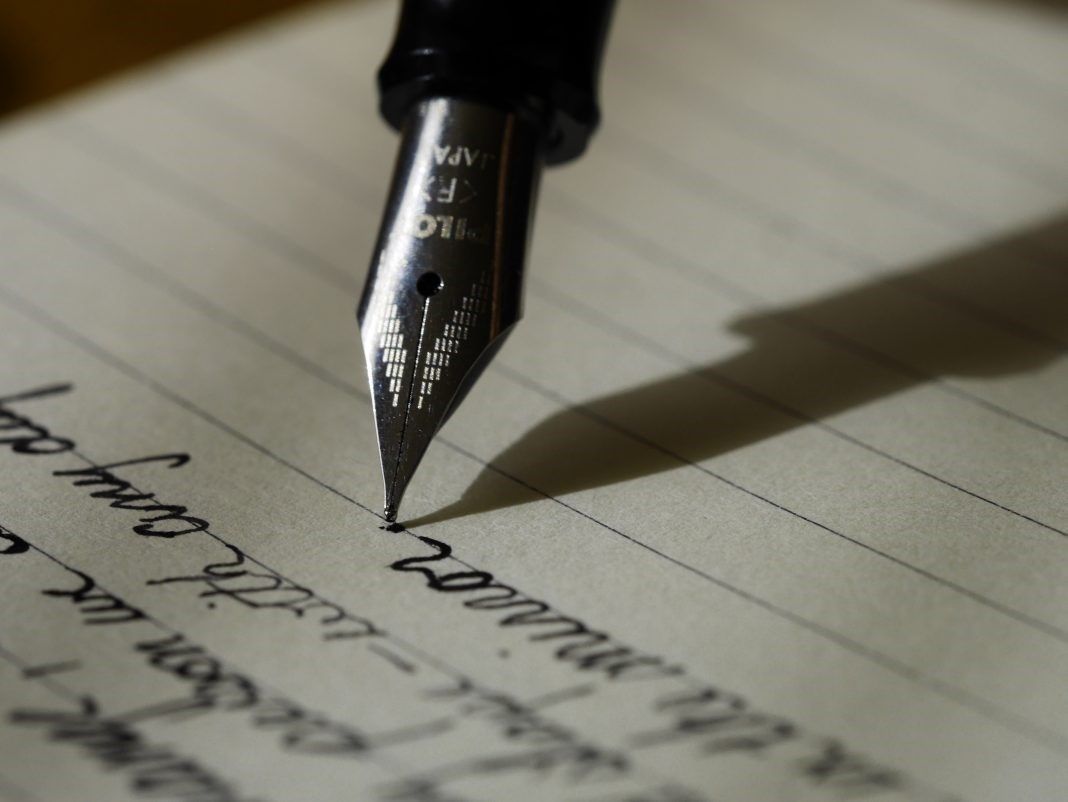
By Jordan Kelly
•
February 23, 2025
The tone or writing style of a bid need not be 100 percent uniform across all sections of the submission, but an editor should ensure against a mish-mash of different, non-complementary styles. A bid with a “salesy” Executive Summary or “front end”, and a “back end” that ranges widely from misplaced “brochureware” to dry academia, gives the impression of a disorganised vendor or bidder. Depending on the degree of disparity, it could even convey the impression that the various departments within the bidding enterprise are not on the same page. In answer to the question, “What’s the best style of writing to employ in a bid?” , it would be simple to say, “That which comes naturally to the writer.” Unfortunately, it would also be simplistic. The problem is, sometimes (often, in fact), a stilted, convoluted academic style is the section contributor’s default writing style. A partial answer to this – and one which avoids this pot pourri of styles ending up on the editor’s desk in the first place – is to coach all section authors in the use of the active voice in their writing.

By Jordan Kelly
•
February 22, 2025
One of the most fundamental mistakes bidders make when answering a call for Expressions of Interest or Requests for Proposal, is submitting a response that’s full of unsubstantiated claims (as website copy and general marketing materials commonly are). Too often, a statement is made in an EOI or RFP response that offers no substantiation, no demonstration of its accuracy. It appears the evaluation committee is simply expected to accept the claim at face value. Yet the evaluators would not be doing their job if they do . . . and you, as bidder, haven’t done “your” job if you expect them to. Further, how can an evaluator award you selection criteria-related points when you answer a question with an empty, unproven claim? Respondents and their writers should ask these questions as they plan and write their answers: What is the proof that this is true / fact? Offer adequate and genuine substantiation – whether of a “third party” nature or by providing some form of provable quantification. Table a statistic, for example, and state the source (which should be a reputable body recognised either by your industry, their industry, or the business sector at large). What is the credibility of this information? Many bidders include lightly edited, thinly-disguised versions of the same material they include in their marketing material or on their websites. The credibility of this information is generally nil, since it is based on opinion-based claims the bidder is making about its own service or product. To be authoritative, you must be able to show that any opinion is, in some form, supported by a credible third party e.g. by accreditation. Why is it relevant / critical to the client / customer organisation? Don’t just state facts or table data and leave it to the evaluation committee to determine their relevance. Explain why, in the context of this bid, you consider that fact or datum important. In that way, you strengthen the support those inclusions loan to your proposition. If, on the other hand, you neglect to do this, you will have potentially wasted that opportunity. Worse still, the evaluator may misinterpret the connection you intended him or her to make. With regard to the answer generated by the above question, what is the proof point of this high-relevance criticality? A savvy bidder will offer a double layer of substantiation. First, it will offer proof of a claim, and/or demonstrate that the claim is proven or provable. Then, after drawing the relevance of that information to the client organisation’s specific needs or challenges, the bidder will go on to demonstrate and/or quantify the benefits that will result from the evaluator making a decision in the bidder’s favour, based on this information. In summary, table proof that your claim is true (not just your opinion); provide some authoritative indicator of third-party concurrence; make it relevant to the client and, in turn, prove this relevance. Finally, if possible, quantify the benefits to be gained by taking the action that your claim suggests should be taken.

By Jordan Kelly
•
February 21, 2025
A "checklist", in the context of a document, usually limits its embrace to non-subjective, cut-and-dried elements of inclusion or accuracy. However, it’s equally important – in the case of a big-ticket bid – to step back and view your content from a broader perspective, to assume nothing, and to ensure your writing style and/or structure packs a decent punch. Here are some key such ‘macro-level’ checkpoints: Does your piece reflect that you’ve followed a cohesive and well-structured, or at least well-thought-out, content plan ? Whether you’re a seasoned bid writer or a newbie, you should plan your work and stick to your plan. Check your “facts”. There’s no room for the inclusion of assumptions or the reliance upon unverified third-party statements or claims in your EOI and RFP responses. Make sure your first paragraph – as the “introduction” to your piece –is strong, punchy and provides a compelling entry point to the rest of your material. Draw out the project-specific or contract-specific relevance and meaning of anything you write. Don’t leave it to the evaluators to connect the dots. Ensure you’ve communicated the benefits associated with the features of your technology or service ( not just the features ).

By Jordan Kelly
•
February 21, 2025
Here are six absolutely fundamental, editing-stage questions to ask yourself and your team, about the draft of your Expression of Interest (EOI), Request for Proposal (RFP) or other form of bid or sales proposal: Does your proposal or submission demonstrate an in-depth understanding of the prospect’s world? Does it demonstrate that deep, multii-faceted, multi-source research was done into the (e.g. historical/political) backdrop of the procurement? Is your proposal or submission genuinely client-focused , framing all information about the bidder in the context of the client’s interest? Is your submission bold and confident in its articulation of its conclusions, but does it stop well short of arrogance? Is it authoritative yet not condescending? Does it demonstrate/substantiate all of its claims?

By Jordan Kelly
•
February 20, 2025
This advice is for those contributing content to a tender / proposal / bid or other form of submission, but who don’t write as a “day job”. It’s too easy, and sometimes automatic, for subject matter experts or other “non-writers” to come to a bid-writing task with the mindset that, “No-one can expect too much from me; I’m not a professional writer.” But that attitude both limits your thinking and your confidence and stymies your standards. Instead, try moving all the way to the opposite end of the spectrum: Write as though the whole world is going to read and savour every word you write, contemplate the sentiments underlying it and the strategy informing your piece, and be influenced to move by its convictions and the propositions it puts forward. In 2000, Stephen King detoured briefly but potently into non-fiction, with the publication of his ‘ On Writing: A Memoir of the Craft’ part-autobiography, part-guide book both for established writers and would-be writers. In it, he explains his own attitude towards the written word: “You can approach the act of writing with nervousness, excitement, hopefulness, or even despair – the sense that you can never completely put on the page what’s in your mind and heart. “You can come to the act with your fists clenched and your eyes narrowed, ready to kick ass and take down names. You can come to it because you want a girl to marry you or because you want to change the world. “Come to it any way but lightly. Let me say it again: you must not come lightly to the blank page.” – Stephen King, ‘On Writing: A Memoir of the Craft’ What if you were to take King’s recommended approach to those written pieces you’ve been tasked with contributing to the bid team’s submission? Would it make a difference? Writer’s Block Perhaps you struggle with “writer’s block”? See ‘ How to Beat Writer’s Block’ . Just start. Somewhere. You can always go back and write skipped elements (even the introductory paragraphs) or re-write. And by the time you head back there, you’ll likely be on a roll. What if your problem is simply discomfort with the whole process of writing? King has the answer for that: Read copiously. “If you don’t have time to read, you don’t have the time (or the tools) to write. Simple as that.” Write something every day, just for the sake of writing deliberately and with focus. King himself writes at least 10 pages a day including Christmas, Independence Day, and his birthday. When the Going Gets Tough – Push Through And finally, don’t give up when the going gets hard: King wrote the 1974 blockbuster ‘Carrie’ , his first published book, while living in a caravan or – in North American terminology – a “double wide trailer”. Frustrated when he hit creativity Roadblocks, he threw the manuscript in his wastepaper basket. Later, his wife discovered it there, pulled it out, uncrumpled it, and read it. The rest is history. As he points out in ‘On Writing’ , “stopping a piece of work just because it’s hard . . . is a bad idea.”

By Jordan Kelly
•
February 19, 2025
If you are to produce an authoritative submission, you must know the precise meaning of every word you use and be sure to use that word correctly. To a large degree, the credibility of your company rests upon your grammatical diligence. Here’s a quick list of words that regularly appear in bids, tenders and other […]

By Jordan Kelly
•
February 18, 2025
Some questions in a client organisation’s Request for Proposal (RFP) documentation appear to invite particularly standardised answers . . . and bidders usually give in to the temptation to cut and paste their responses from the last 17 submissions they produced. After all, how do you make the answers to such standard, black-and-white, non-subjective sections […]

By Jordan Kelly
•
February 16, 2025
In the third and final Part of this series of recommendations on productivity, I’ll give you a window into how multiple-title non-fiction authors (of which I’m one) maintain a steady flow of published books (often while running some form of business in parallel and also "having a life"). Here are my final three tips on achieving writing “super-productivity”: 1) Invest in Axe-Sharpening Time ‘Give me six hours to chop down a tree and I will spend the first four sharpening the axe.’ – Abraham Lincoln What is it you want your writing to achieve? What’s its macro-objective? What are the micro-objectives? Who is your target audience? What’s its current degree of knowledge on your topic? What’s its current mindset? Can that audience be categorised collectively? Do its members require more granular analysis? These are just a very few of the questions to which a competent, efficient writer gives deep thought before putting pen to paper or fingers to keyboard. Invest this time up front and you’ll write with greater clarity and greater speed. And you’ll spend less time re-writing. 2) Do Your Research Thoroughly ‘Resist the temptation to try to use dazzling style to conceal weakness of substance.’ – Stanley Schmidt Why do so many Expression of Interest (EOI) and Request for Proposal (RFP) responses (by way of example) go through time-consuming re-write after re-write after re-write? One of the biggest reasons after (1) above i.e. lack of planning and consequent lack of clarity - and closely related to that – is that a lack of research has resulted in a lot of waffle. They read poorly. And that’s being kind. They read poorly because they’re trying to smoke over a lack of solid facts and genuine insights. Which, in turn, is due to a lack of research. Proper research. Real research. Meaningful research. Think deeply about the facts, statistics and insights you would do well to be in possession of before you sit down to write , and when you do sit down . . . once you’ve organised those facts into a logical, flowing order, you’ll write like the wind. 3) Keep A Recording Device or Notepad Handy ‘The best time for planning a book is while you’re doing the dishes.’ – Agatha Christie (Best-selling author of all time, her murder mysteries and other works of crime-and-detective fiction having sold four billion copies in more than 100 languages.) Those who genuinely think about what they write before they sit down to write it, know that thoughts on their intended subject matter can come to them anywhere, any time. It’s tempting to tell yourself you’ll recall these thoughts later – especially when they come at logistically inconvenient times. The fact is, it’s rare that you will actually remember these valuable nuggets. So take the time to write them down, as and when they flow into your mind. You won’t regret it . . . but you will regret being unable to recall them when the time comes to put pen to paper or fingers to keyboard. I often carry a little dictaphone (the type lawyers use) in my handbag. Likewise a small notepad. And when I’m hit by a bolt of brilliance I take the time to stop and record the full detail, rather than risk not being able to get the thread back later. A few keywords won’t do. If it was a thought worth recording, it was a thought worth not losing.

By Jordan Kelly
•
February 12, 2025
I’ve written copiously about the advantage corporations create for small and medium-sized enterprises when these larger organisations exercise an arrogant attitude – as, unfortunately for them, they so often do. In this article, I’ll give you a window of insight into how arrogance shows up in bid documentation tabled by arrogant B2B enterprises. It comes down to this: If those frontline personnel responsible for a company’s sales think they already know it all then, in general, they’re unlikely to listen with the required intensity to pick up the vital clues that will help them differentiate their offering from those of their competitors. And they’re unlikely to have developed sufficient understanding of the client or customer organisation to feed back to their bid teams the quality of information and the depth of detail required to produce a genuinely client-centric Expression of Interest, Request for Tender, or other form of proposal. So let’s see what the end-product of a know-it-all approach looks like in practice. For the purpose, let’s discuss the most valuable piece of proposal real estate: the Executive Summary . There are three fundamental flaws that show up consistently in this all-important front piece. Each is the product of an insufficient appreciation of the client or customer organisation’s bigger picture, its priorities, its concerns – and all the other elements of understanding that would have resulted from competent information-gathering and a humble mindset. Fundamental Flaw No. 1: ‘We, Our, Us’ Most Executive Summaries I see are self-focused to some degree. Some to a very considerable degree. I once evaluated a bid, the Executive Summary of which featured the seller’s name no less than 17 times in a short series of introductory paragraphs. You might laugh at that, but a large percentage of Executive Summaries end up with the seller’s or service provider’s name (or “We”, “Our” and “Us”) at the beginning of most paragraphs. Other Executive Summaries start out talking about the client, but only as a prelude to a monologue about their own capabilities and credentials . . . often not taking the time to fully draw out the client-specific, contract-specific, or project-specific relevance of these. Fundamental Flaw No. 2: A No-WIIFM ‘Win Theme’ Many corporate bid teams wax on about “win themes”. Yet their “win themes” are usually all about themselves, their product or service, and what makes them so superior. And all in the most self-focused, self-congratulatory, unsubstantiated manner. What they fail to recognise is that the interest a prospective client or customer has in any service provider or product supplier, is directly proportionate to how relevant that provider or supplier has made itself to that client or customer – the “What’s In It For Me” factor. To draw that relevance requires listening skills. And to be a truly effective listener requires an open mind and an attitude of humility. And so results an Executive Summary – and often, in fact, a whole proposal – that is peppered with empty “brochureware” statements such as “best in class”, “world’s best practice”, or “cutting-edge technology” . . . and precious little clue as to what value this self-proclaimed grandeur brings to the client organisation in its specific set of circumstances. Fundamental Flaw No. 3: Fluffing Out with Filler Copy “We are excited by the opportunity to embark on this project with XYZ Corporation, and we look forward to bringing unparalleled skill and experience to drive your objectives forward.” Or, how to spin 29 words out of nothing to fill space at the beginning of an Executive Summary. Do executives and bid teams really write this sort of filler material in all-important pieces like the Executive Summary? Yes. And, yet again, they do it because they haven’t listened to the client, asked quality questions, and formulated a bid strategy from a position of true understanding of that customer’s world. If, in fact, they have formulated anything that represents a genuine bid strategy at all – since they may have considered such an activity expedient, given their self-perceived knowledge of the client or customer. Such are the very common weaknesses of large and supposedly highly skilled corporate bid teams. And such are the competitive advantages of the nimble and more attitudinally flexible SME that recognises the value of assuming nothing, taking the time to conduct quality research, crafting high-value questions, adopting an attitude of humility and employing strong listening skills, then taking detailed heed of the answers and using these as the foundation of a customer-centric bid strategy. Even if that SME’s offering were no better in any tangible regard than its larger competitors’, all else being equal, its proposal would stand an excellent chance of hitting enough hot buttons to pip the bigger guys at the post.

By Jordan Kelly
•
February 12, 2025
When you pepper your bids, proposals and other client communications with your own in-house jargon, you demonstrate your inward, internal, self-focused thinking. You give him or her the clear message that you are either unable or unwilling to think or communicate from any perspective other than your own / your company’s. And you indicate to them that they’ll have to constantly make the effort to interpret you and your position, rather than vice versa, as it should in fact be. To prevent this internal speak and in-house or industry jargon, pair up with someone who can competently and knowledgeably role-play a representative from the customer / client organisation (i.e. someone who KNOWS the customer organisation’s relevant personnel). Read the copy aloud to that person and have them stop you as soon as they hear a word, term or phrase with which they are unfamiliar, or that smacks of your company’s internal processes and philosophies. Better still, read the copy aloud to several people role-playing a variety of the client’s key personnel. That way, you’ll also pick up on language that may be too technical for some.

By Jordan Kelly
•
February 11, 2025
Many contributors to Expression of Interest (EOI) and Request for Proposal (RFP) responses are still writing in an overly-dry, benefit-burying "academic" style. Or, at the completely opposite end of the scale, doing an outstandingly amateur job of mimicking advertising copywriters. Or worse still, their writing style is a hybrid of the two. This is especially true of the civil engineering sector, where many of the contributors to a submission are engineers, or the like, by profession. They’ve been taught to write in an “academic” style and it’s all they know. So they either stay in that mold when authoring a bid section, or they think it necessary to slip into hard-core sales-speak. They don’t understand the vast space between the two extreme and undesirable ends of the spectrum. I’ve been pointing this out in my evaluations of client documentation for years, as a priority issue, but often, little changes. Why? Primarily because, as far as corporate bid teams go, as fast as that problem is solved in a team, new un-initiates are rolled into subsequent bids. It’s like sweeping back a mudslide with a hand broom. What are the keys to taking raw information and turning it into an authoritative, highly readable, conclusive and compelling section response? First, the basics. (Let’s concern ourselves with “style” after we’ve nailed these): 1. First and foremost – answer the question. If capitals in website copy didn’t come across as “shouting”, I’d constantly find myself writing “answer the question” in bold, capitals, underscored, with asterisks on either side, across the bid documentation I evaluate. Seriously. Getting carried away with a sales spiel or thinking a tender evaluator won’t notice that you’ve smoked over the inability to satisfy the intention of the specific question both lead to the same result: Minimised points for that section. And massive erosion of the overall credibility of the submission. 2. Have and USE A guiding bid strategy document. Most organisations are still doing it: Expecting their section authors or dedicated bid writers (whether in-house or external) to produce copy without sufficient guidance by way of an overall, underlying strategy. Many organisations are hiring in facilitators (who are rarely qualified to call themselves anything remotely resembling “strategists”) who produce a plethora of overly-basic, group-think-driven assumptions in key point form on butcher’s paper. The “war room” walls are then papered with these “outputs” and the entrapped-within writers are left to convert this, for themselves, into some form of guiding strategy. 3. Have section authors plan out their content, in order of intended fact roll-out, and submit this to the appropriate party before letting them commence writing. If you fail to implement this policy, then it’s almost guaranteed that those section authors who are not writers by profession, and/or have had no training in writing skills, will launch into a stream-of-consciousness outflow of directionless sentences and paragraphs. There will likely be a disconnectedness between paragraphs, and a lack of logical progression to the roll-out of facts. Think I’m being uncharitable? Produce as many evaluations as I have in the past 18 years and then challenge me on that. Now . . . having set the parameters and the process for a strategy-guided response, a logical flow, and a document that actually answers the client’s question/s, let’s look at what makes a piece of bid-writing compelling : 4. Go a quantum step further than simply applying the standard "Features vs Benefits" admonition. The “state the benefit not the feature” admonition has long since become commonplace. But there’s a special way to apply it in bids . . . because, in a bid, you know the specific reader of the document. It’s not a generic brochure with a multi-target audience. Two points to be made here, and they both circle right back to diligence and thoroughness in the strategy development phase: a) The deeper the understanding of the potential client and every facet of its contract/project and overall operating environment, the more immediately relevant these benefits can be made to the bid in question. b) It’s not the writer’s job to identify these alignments. It’s the strategist’s job. And it’s the strategist’s job to get them into the guiding strategy document . It’s only the writer’s job to articulate them, and to do so in a compelling manner. 5. Now, get clever with your copywriting skills. Here are some of the “principles of the pros”. First, understand the extent to which the nature of the piece you’re working on and the audience you’re writing to, allows you to write in a conversational tone. Second, grab the evaluator’s attention by leading with the most compelling component of your section response. The rest of your answer and your facts should hang off that, developing logically from that as your entry point. Keep your focus firmly on the reader (in this case, the potential client or customer) before turning to your own strengths and offering. In this way, you will have explained how everything you’re about to roll out about you , is relevant to them , their pain points, their sensitivities, their needs and their desires, and the specific boxes they have to tick with this particular procurement. Weave in the key factors that of differentiation from the competition and make these immediately relevant to the potential client or customer. Establish your credibility with relevant facts. Substantiate every claim you make, using quantified proof points wherever these are available. Don’t simply expect the evaluator to believe your claims. That’s an arrogant and presumptuous way to write. I call it “brochureware”. Find a way to quantify the value of your offering. The starting point for this is to identify (through research, not assumption) precisely what constitutes “value” in the eyes of the potential client.
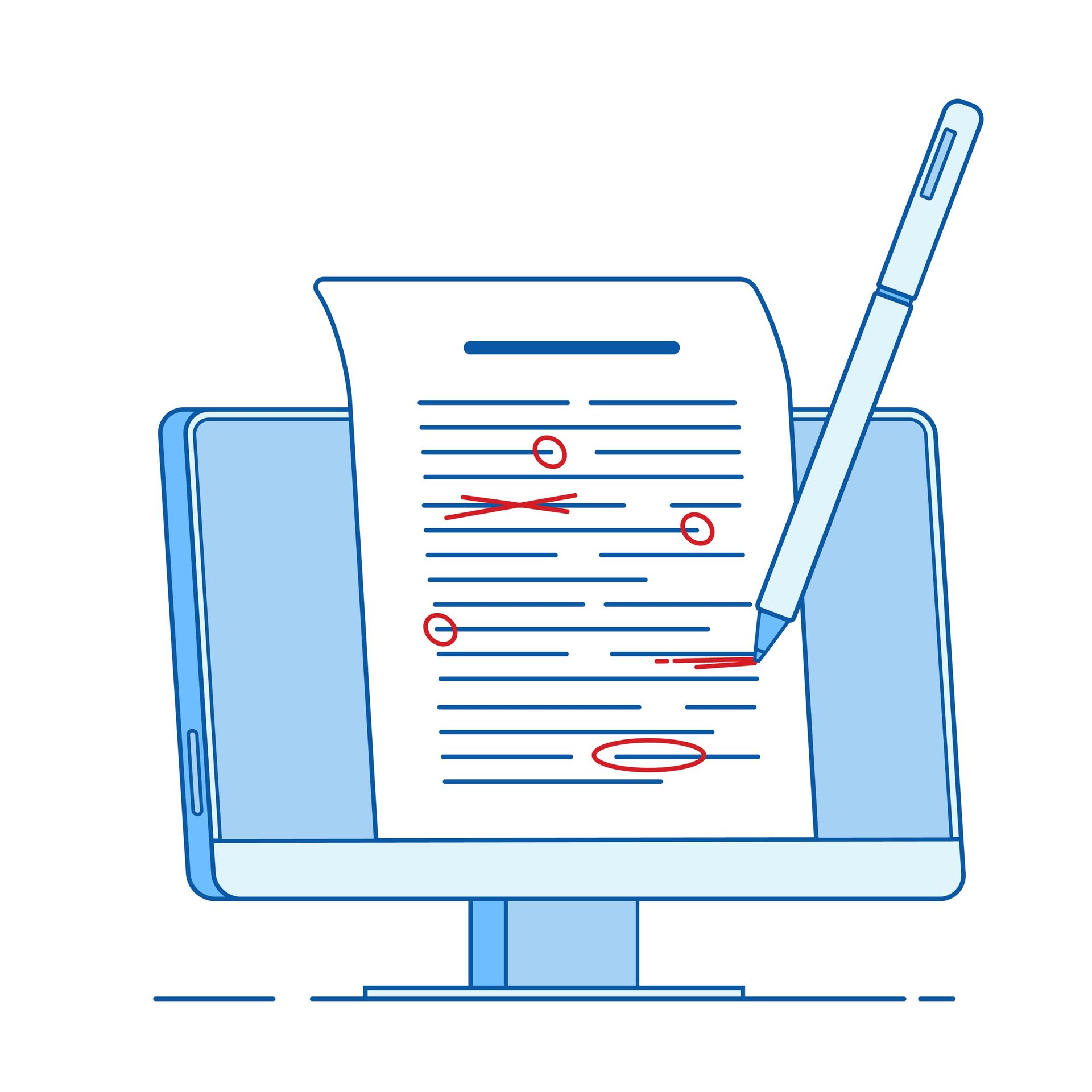
By Jordan Kelly
•
February 11, 2025
Always edit your work before handing it over to the bid manager, regardless of whether or not it will be the subject of further treatment by another writer or an editor. Here are some questions to ask yourself: Is my introductory paragraph compelling? Have I proceeded to the main point/s as quickly as possible? Have I established credibility on behalf of my company, where this is necessary? Have I answered the question – directly, and in the required amount of detail? Have I provided data and any other form of proof point necessary, with regard to any claim I have made? Have I been clear in terms of the key messages I intended to communicate? Have I framed the material from the client’s point of interest – in all regards? Have I adhered closely to the themes, content and instructions of the guiding bid strategy document? Have I employed these in a manner that helps to differentiate my company and our offering from the competition’s likely proposition? Have I focused on communicating benefits; not just features? Are my sentences and paragraphs of a reasonable (and preferably, a varied) length? Are my sentences complete? Have I ended paragraphs and started new ones according to a clear progression of logic in my material? Have I been clear and concise? Can I cut out any unnecessary words? Have I written to express, rather than to impress? Have I avoided flowery and/or fashionable language? Are all my facts relevant? Have I explained any facts and observations that, from the evaluator’s perspective, require it? Have I checked my copy for spelling and grammatical errors (particularly those I know I commonly make)? Have I avoided the over-use of industry jargon? Have I explained any jargon, where it won’t be familiar to the evaluator? Have I avoided the use of my company’s own internal-speak and other terminology that the evaluator may not fully understand, and therefore may have to guess at? Have I read my copy allowed to a disinterested party, to experience the valuable phenomenon of “hearing it through another’s ears”?

By Jordan Kelly
•
February 6, 2025
In ‘ Grammar Gaffes to Avoid In Bids ', I rolled out a list of common grammatical malfunctions I see in bid submissions. It’s now clear that people at all levels within their respective organisations share my concern about the credibility-denting effect of poor grammar. What’s also become particularly clear is that there’s a real irritation over the lack of basic grammatical knowledge by a significant proportion of the younger generation . . . you know, those for whom “texting” probably came before any real study of the English language and how to use it correctly. That said, it’s probably my own generation that has the greater culpability in the matter, given that it’s my generation that should have taught them better. But, to leave the greater blame discussion for another forum, when personnel from the Millennial generation are tasked with contributing to submissions – believe it or not – I’m seeing some truly horrifying examples of poor schooling. Some examples for you. Writers who don’t know when to correctly use the word “than” , as opposed to “then” . . . as in: ( WRONG) “Should this occur, than we will implement the following contingency plan.” ( ALSO WRONG) “Our experience demonstrates this course of action is more effective then conventional responses.” Writers who don’t know the difference between “your” and “you’re” (notwithstanding the fact that the contraction “you’re” has no place in bid writing) as in: (WRONG) “We have given careful consideration to the issues your currently experiencing as regards consumables recycling.” (ALSO WRONG) “ You’re systems will be monitored on a weekly basis.” Writers who seem to think commas have replaced the traditional use of the full stop (and, worse still, that it serves no other function): (WRONG) “This is a current area of focus for our organisation, we are deeply concerned about the impact upon local waterways.” Writers who have never heard of the hyphen . . . as in: ( WRONG) ” . . . a 25 year old piece of equipment” . . . ” (as opposed to i.e. CORRECT ) “a 25-year-old piece of equipment”). ( WRONG) “A to be advised date", as opposed to ( CORRECT ) “a to-be-advised date.” Or, worse still, clumsy, un-hyphenated conglomerations like (WRONG) “ proAustralian “, and (WRONG) “ semidetachable ” versus (CORRECT) “ pro-Australian ” and (CORRECT) “ semi-detachable .” Writers who see no difference in their application of “ there ”, “ they’re ”, and “ their ”, or “ whose ” and “ who’s “. The Disappearing Question Mark My other beef with younger writers is their propensity to see question marks as unnecessary. Where did this notion come from? Perhaps they feel that avoiding the use of a question mark (where one is, in fact, necessary) makes their writing read more authoritatively. Who knows? Whatever their reasoning, such a practice is grammatically incorrect. A question is a question and should be denoted as such with a concluding question mark. Ironically, it seems just as many of these same young writers employ question marks when it is grammatically incorrect to do so: (WRONG) “He asked what their labour turnover was? ” This question is indirect and does not require a question mark. This is not, however, to be confused with the fact that a question mark is used to indicate a reflective question (although these instances occur primarily in spoken English: “You were showing a profit up until then?” ) So . . . let me have it. Am I just a grumpy grammar curmudgeon? Or do you share / continue to share my concern – and have a few of your own personal non-favourites to share with me?
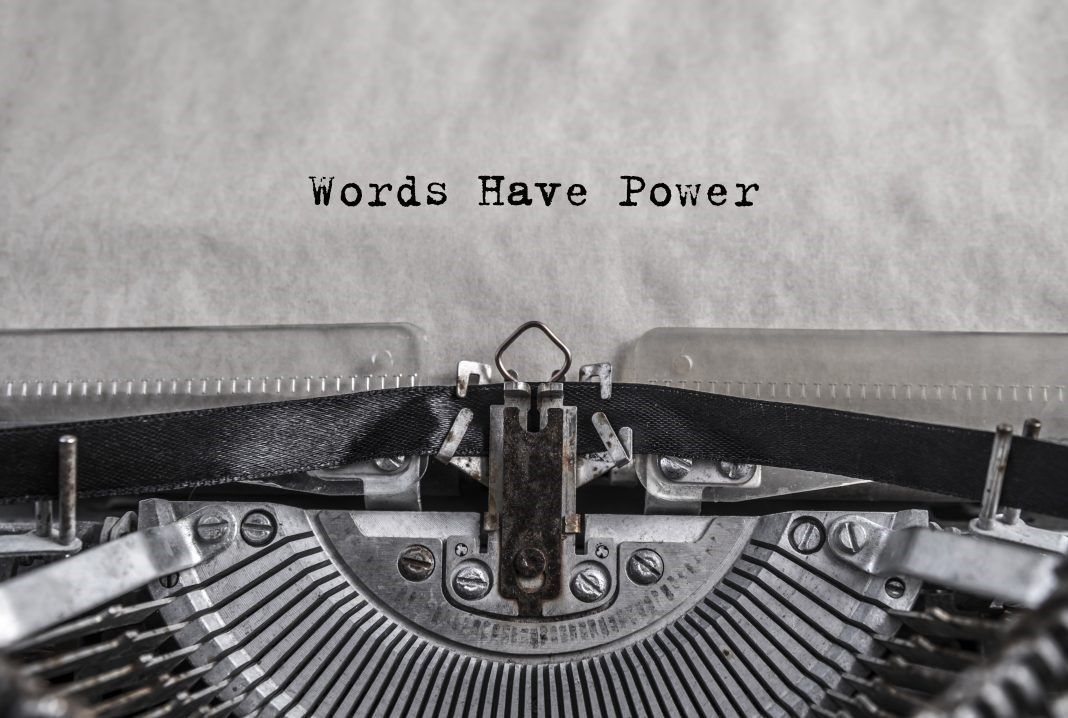
By Jordan Kelly
•
February 5, 2025
Journalism offers many principles and practices that a bid-writer may valuably heed . . . most especially as concerns the crafting of a punchy and enticing opening paragraph or, in journalistic lexicon, a “lead-in” or “intro”. This peak paragraph should encapsulate the essence of your piece. While you should be as direct and interesting as possible throughout, the “intro” sets the scene for all the content that follows in that piece or section. With the intro in place and doing its job, the next element of the journalistic formula that a bid writer may wish to make good use of, is the “inverted pyramid” principle. The inverted pyramid dictates that you organise the key points of your content in descending order of importance – leading in with a summary of the most important point, followed by the next most important point, then the next. This generally relates to the first three paragraphs, after which the rest of the story unfolds as an expansion of the points made in these. The journalistic rationale is that the average newspaper reader scan-reads most articles. Therefore, he or she needs to get the gist of the story in the headline and the first three paragraphs. While the reader-evaluator will, you would hope, read the full text of your response / proposal sections, it still behooves you to lead in with your most critical information and develop your piece in an order that maintains his or her keen interest. The AIDA Formula An equally viable format for rolling out your content is the “AIDA” formula used to guide direct marketing pieces. This is similar to – although not the same as – the journalistic “inverted pyramid” principle. This acronym stands for Attention, Interest, Desire and Action. In “bid” terms, this formula translates to: • Get attention. • Build interest. • Unfold the big picture / your observations of the prospect organisation’s project or procurement, its needs, and the quantifiable benefits it seeks. • Build your case / establish credibility / provide proof points. • End with a reminder of your key theme and the wisdom of choosing your offering as the answer to the prospect’s problem or need.

By Jordan Kelly
•
February 4, 2025
If you’re looking for "high-viz" points of difference when competing with larger competitors, look no further than the avoidance of convoluted bombast and meaningless "mumph" as your first. Most corporate submissions are full of it. The use of plain, unadulterated English will be a refreshing change for your prospect organisation’s evaluators. Bid teams cause themselves a huge problem when they insist on using trendy fashion-speak and other frivolous fuzz in their written responses. Knowing the frustration this causes clients, and the frequency with which it happens, I can only sincerely urge you to take full advantage of the likelihood of any tendency by your competitors towards what is “high-falutin'” verbiage. There are two key reasons your competitors engage in this rubbishy writing. More often than not, its usage is an attempt to sound sophisticated and “switched on” or “up to the minute”. Other times it’s to smoke over a lack of substance in answers to the bid documentation’s questions. Often, it’s both. Bid teams and their writers can also get tangled up in this type of non-English even when there actually is knowledge and potential substance to be conveyed in the content of a proposal or bid. This is particularly unfortunate for their employers (but equally to your advantage), because those documents come across pretty much the same as the substance-less version that uses the same type of guff to disguise a lack of core message. Here are some examples of this sort of “empty’” writing. These examples are fabricated because quite clearly I can’t refer to confidential bid documents. Nonetheless, they’re typical of some of the writing I see produced by corporate sales and bid teams . . . and many senior executives, too, even more alarmingly. Example 1: We employ best-of-breed technology options to implement cutting-edge, proven solutions, ensuring you of a constantly innovative approach and continuous improvement in your IT environment. Example 2: Our track record demonstrates our commitment to world best practice and, accordingly, we will engage our focus on innovation throughout the contract. Example 3: As your business partner, we will work closely with you to leverage our experience across the project, producing an optimal solution that is robust, scalable and that can be seamlessly integrated with your existing systems. Do experienced operatives really write this kind of largely meaningless nonsense ? Yes, they do. And much worse. The entire content of some of the bids I’m given to provide commentary on is as convoluted and meaningless as the above examples. Tens (sometimes hundreds) of pages of, largely, non-information. This commonly happens when little or no prior planning takes place and where, as a result, there is no central bid strategy. Worse still, this strategy-less starting point guarantees a very supplier-centric bid or proposal. And usually one that is not even particularly readable or sensible, let alone compelling. My recommendations are two-fold: • Use plain English. Resist the temptation to dazzle the prospective customer or client organisation and its evaluators with an extensive array of jargon. I’m always particularly saddened when I see a submission produced by a smaller enterprise, the management of which obviously thinks it’s a demonstration of their ability to foot it against their larger competitors by using the same crazy corporate-speak. • Place priority emphasis (as early as possible) on conducting intensive, thorough bid strategy planning sessions (preceded by comprehensive client, contract/project and competitor research). This will help ensure a distinctive win theme and, in turn, solid content - and applies to any size business. Tell it like it is. Drop the dandy words. You don’t need them, the client/prospect and its evaluators are neither fooled nor impressed by them – and (pending the quality of your offer and the substance of your content) the absence of them will render your documentation a pure and softly-landing snowflake amidst the garbage that is the hard-going reading contained in your corporate competitors’ productions.

By Jordan Kelly
•
February 4, 2025
In ‘5 Tips to Sharpen Your Bid-Writing’ , I wrote about the importance of a having clear and documented bid strategy, focusing on benefits, answering the client’s questions , substantiating your claims , and avoiding consultant-style parroting . These considerations all, in one way or another, relate back to effectiveness in the strategy planning stage. That is, you can’t expect to execute these tips successfully unless comprehensive research and thinking has taken place beforehand. My next lot of tips relate to the writing function per se . Tip No. 6 – Client Focus vs Supplier-centrism Be client-focused not only in your content (i.e. as above, this relies on a solid bid strategy), but also in your writing . If and whenever possible, your choice of opening words should let the evaluators know that your answer and information is going to be framed in the context of the client organisation’s interest, its needs, its project / account /contract, its priorities, and its concerns. Then keep the focus squarely on the client. Don’t revert to an organisationally self-centric tone. Tip No. 7 – Steer Clear of Hot Air & Hype Avoid the temptation to slip into sales-speak. Don’t be tempted to go into marketing copywriter mode. It’s not required. Worse, you’ll come across as an amateur, if copywriting isn’t your day job. For the most part, write as you would speak. It’s the most readable way to write. If your writing is natural, informal and unstilted, that is in fact what you are doing: You’re speaking to the client. You’re just doing it through the written word. So don’t out-clever yourself by falling into the mistaken mindset that you need to be a creative writer to write bids. In fact, trying to be creative or “salesy” is what brings a submission down. It’s about getting the basic content correct and complete, then simply making sure it progresses logically and reads sensibly. Tip No. 8 – Avoid the ‘Cut & Paste’ Trap Do NOT “cut-and-paste” from your company’s policies and procedures manual or corporate / product marketing materials. Give the evaluators more credit than to fall for thinking this is original content. Tip No. 9 – Be Wary of the Template Trap Similarly to the above, don’t rely on templates and text from previous submissions. Apart from the obvious scope for mistakes, when you cut-and-paste you’re not exactly working with a genuine client-centric focus. That is, the focus of the copy in question is not this particular client . . . at best, it’s any client. Tip No. 10 – External Impressions Read your finished piece out loud . . . to someone else. Read your material aloud to a disinterested party. You’ll avail yourself of the invaluable phenomenon of hearing your writing through that person’s ears. So much the better that they have no knowledge of the topic; you’ll quickly ascertain whether or not your piece makes sense to the common reader or other non-technical audience.
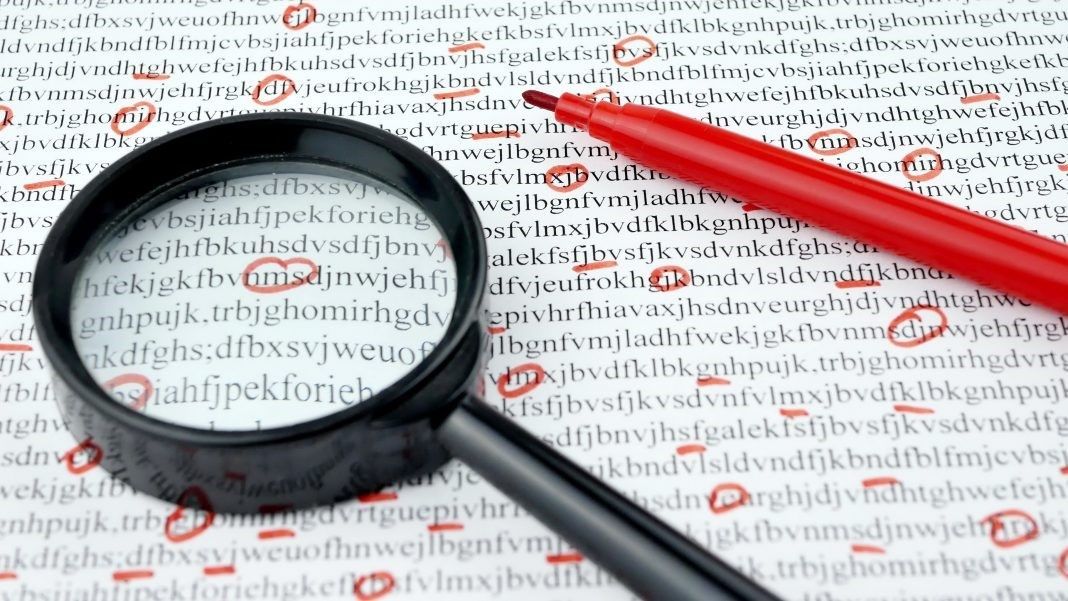
By Jordan Kelly
•
January 31, 2025
With grammatical standards slipping badly in today’s digital/electronic communications-driven society, there’s been an unfortunate flow-on effect in the quality of written presentation in bids i.e. responses to Expressions of Interest (EOIs), Requests for Tender (RFTs), Requests for Proposal (RFPs), and the like. Many years ago, when I was a fresh-from-high-school cadet reporter, my subeditor (the unsmiling, could-never-be-pleased 6’4″ ”Mr G”) forged my fledgling news-writing and editorial standards by constantly drumming into me: “Make your writing understandable to the lowest common denominator within the readership. Make your grammar acceptable to the highest common denominator.” I write frequently on the first part of the fearsome Mr G’s admonition. However, writing – as I do – for a predominantly mid to senior level audience, I rarely write in regard to the second part of the admonition. But now, with the rapidly declining standards I’m observing both in everyday corporate communications and in bid-related documentation, it’s time to bring the issue out of the closet. Before I do, let me make this point: For every section author or subject matter contributor that considers this degree of concern reflective of “anal retentiveness”, there’s a reader (and possibly a multiple thereof) that considers the correct use of grammar reflective of a basic fifth grade education. Which of these two opposing viewpoints do you think is most likely to be represented on evaluation and supplier selection committees in the case of high-value bids? I sincerely hope you answered in favour of the latter (age factors alone would suggest this). This, then, is your “highest common denominator” reader . . . and his or her opinion of your organisation’s grammatical standards stands to directly flavour the credibility he or she attaches to your submission. Subconscious Judgements Aplenty At the most basic and overt level, a bid writer’s incorrect use of grammar might render some aspects of your EOI or RFP response, or your proposal, ambiguous or otherwise unclear to an evaluation team. At the more subconscious level, it’s possible the evaluators could make an unfavourable judgement about your organisation’s propensity for attention to detail in its service delivery or other aspects of its after-sales performance (including communication). If so, they could be forming a hard-to-change opinion about the frustration your people are likely to visit upon their people in your organisation’s ongoing relationship with them. And somewhere towards the centre of the spectrum of concern is the certainty that the evaluation panel will be questioning the overall professionalism of your enterprise in general. And all for the want of the exercise of leadership in your standards of written communication. So, is it worth taking a stand against today’s trend towards the relaxation of conventional grammatical standards? Is it worth demonstrating leadership in this regard? And, if so, is it worth making certain these high standards are firmly evidenced by the quality of your bid, tender and proposal documentation? I vote “YES”. (Mr G may be watching.) How do you vote?

By Jordan Kelly
•
January 31, 2025
To an extent, smooth and natural copy is conversational copy. It sounds like one side of a conversation between two parties familiar with, and trusting of, each other. That type of copy – if it’s genuine and well-executed (but not overly familiar) – puts the reader at ease, something that’s difficult to achieve with writing that’s stiff and formal. This is, of course, likely to prompt mixed views. Some professions are particularly wedded to their formal, academic writing style . . . engineers are a perfect example. The problem arises when writing becomes so overly technical or convoluted that it lacks readability. Consider the following: “Further, the directors and management of Black Group believe in promoting the internal opportunities that are available to our staff through the marketplace expansion and organic growth of Black Group. As such, Black Group will be providing ongoing training and mentoring programs to all of our employees in order that they may achieve job satisfaction within the Group and also reach their full career potential. This policy is demonstrated by the number of our long-term staff that have enhanced their abilities, their progression within the Group, and their career paths by taking up these opportunities.” Not the worst example but nonetheless, it makes evident the low readability of an entire bid section written in this stilted style. If you tend towards this type of writing, one of the ways you can identify it is to read your piece aloud to someone else – and preferably someone who has no knowledge of your topic. You will “hear it through their ears”. That way you’ll quickly ascertain how understandable (or not) your piece is to the common reader or non-technical audience.

By Jordan Kelly
•
January 30, 2025
It’s commonly assumed by bid teams that emotion has no place in formal Expressions of Interest (EOIs) or Requests for Proposal (RFPs) . . . and that these should be strictly hard core, fact-and-logic based documents. But this is an assumption – and a debate that needs to be had within the context of the overall pursuit process. My own observations – over a decade and a half of formulating bid strategy – are that, in the early stages of a procurement process (i.e. years or months before a major capital investment) client-side thinking is predominantly qualitative (versus quantitative), subjective (versus objective), and even emotions-based. This is the phase during which marketplace and opinion leader influences, along with personal preferences, are shaping the views of those leading a major procurement investment. This is the "emotions" phase. This is also the phase during which client-facing business development (BD) operatives / pursuit leaders should be employing their best listening skills: listening for biases towards you or a particular competitor (at either the reputational/organisational or the product/service level), listening for objections, and listening for variance in the ranks of the procurement influencers. Fast forward to the production of the formal submission: Assuming your BDs and pursuit leader – as well as any supporting departments within your organisation – have done their level best to steer the prospective client in your direction, there will be a certain mix of emotions with which the client team has arrived at the point of sitting down to formulate its market call documentation. You need to know precisely what that emotional mix is – or at least the predominant emotion within that mix . For example, is it your BDs’ best estimation, from their meetings as well as their secondary research, that this prospective client wants as close to total risk-mitigation as it can get? You’ll have heard the old maxim, “No-one ever got fired for buying IBM.” (If you haven’t, this basically meant that no IT manager ever lost his or her job for making a poor purchase decision, as long as it was an IBM product. This maxim has since been applied to other industries i.e. as long as you choose the biggest, most-established brand name, you’ll have less explaining to do for any risky supplier or service provider selections, or if things go totally pear-shaped.) What’s the Underlying Fear or Desired Reward? If this is the case in any procurement process in which you’re a bidder, the underlying emotion is clearly risk-aversion. Thus, the emotional need is for security – for bullet-proof certainty that the wheels won’t come off during delivery of your project, or that your product won’t fail or be unsuitable for its intended purpose. This, then, is the emotion that you must address in your bid strategy, and in your written submission. And, to the bid writers: There will be words that scratch that emotion, and that are perfectly appropriate to use in a formal EOI / RFP response. (An aside, you need to fire bullets from both guns in your copy i.e. emotion and logic . To whatever degree you’re unclear about which gun’s trigger gets pulled first and which second, in any given section of the submission err on the side of eliciting a visceral reaction in the evaluators, and then following through with logic to consolidate their conviction.) That said, with regard to any emotion-inducing terminology, this should still, of course, be within the realms of acceptable business writing. It also shouldn’t be peppered through your copy erratically and outside of genuine strategy/question-response contextual usage. And Now, To Logic So we acknowledge that emotion will have played a role in the decision as to which service providers or product suppliers were invited to tender for a large procurement; that the initial stages of a major purchasing decision are, at the least, influenced (if not driven) by emotion and subjective influences. Now let’s move to the role of logic – and precisely when to push that button. And that is (outside of the emotion/logic balance demonstrated in the written submission) the shortlistee selection, due diligence, and post-purchase justification phases. These are primarily driven by logic. (Your prospective client would, of course, claim that these phases – if not the entire procurement cycle – are driven 100 percent by logic. But you know better.) To recap then, your strategy and your submission needs to press both buttons. And, within the context of any given question/section of the client’s documentation, you will likely want to do it in the order of emotion backed up by logic . Again, emotion, to stir things up – and logic to reassure the evaluators they’re leaning in the correct direction and to thus move things over the finish line. But, if there’s any doubt in your mind re the nature of the emotion, or striking the appropriate emotion/logic balance, err on the side of rolling out the logic and hitting that hard. Because, at the most decisive moment in the whole process – the moment when the evaluator’s hand moves towards the boxes where he or she enters your section/criteria scores – he or she knows it’s rational, logic-based facts, figures and other hard data that he or she will be required to put forward to justify to any other parties, the scores you’re about to be awarded. In short: Identify the driving emotions behind the procurement and use this insight, both in your bid strategy and in your end-submission, to hook the evaluation team at a “gut” level. Then provide all the logic, rationale, facts and stats to demonstrate how that emotion will be satisfied or put to rest through selection of your proposition over and above any competitor’s.

By Jordan Kelly
•
January 29, 2025
In Part One of this article, I shared my knowledge of the habits of writers who achieve ‘super-human’ levels of productivity. I also shared the modus operandi that enabled me to push out 17 books in three years, while keeping on top of my daily consulting and coaching commitments. I trust the first three insights […]

By Jordan Kelly
•
January 28, 2025
Tardiness leaves our credibility and even our honesty open to question. Conducting a pre-submission review for a client recently, I noted a claim that two delivery team members had “a collective 50 years’ experience” in a particular type of infrastructure. However, this didn’t tally with the individuals’ Curricula Vitae, so I asked for these figures to be checked. The amended figure came back: “30 years of collective experience”. The client notices these inconsistencies , and a figure pulled out of the air doesn’t do our credibility any good. At all.

By Jordan Kelly
•
January 28, 2025
Start. Just start – anywhere in the piece. I started out my career as a cadet reporter. When you’re writing for a daily newspaper, one of the most important skills you have to acquire is the ability to craft a great “lead-in” i.e. to grab the reader and draw him in. No matter how much you hone this particular aspect of the craft though, you can still sit and sweat over your introductory paragraph for ages. Especially if you’re addicted to perfection . . . or if your subeditor is. I soon learned that the best way is (after you’ve mapped out your basic structure) to simply start writing the piece . . . just let it roll (I stress – after having first sketched out your basic flow of facts). In my experience, the best lead-in (also known as an “intro”) will reveal itself during the course of the exercise. You can go back and write it / work on it later – crafting it to perfection if you will. But you won’t have let it stymie your overall progress.

By Jordan Kelly
•
January 23, 2025
This point is so important, it’s going to be a checklist all on its own: Have I framed ALL key points and other content from the prospect organisation’s acute point of self -interest? Go hunting for any place in your proposal, response or submission where you might have slipped into vendor self-centricity. While it may sound like a simplistic admonition, it’s only a minority of bidders that actually pass this essential litmus test. For many organisations, there’s a quantum leap to be made to translate principle into practice: that is, when it comes to fully understanding the client’s world and associated challenges, and to then formulating a solution specifically to address those issues and articulating that proposition from the client’s perspective. A particularly good idea is to read your proposed documentation from the perspective of the client evaluation panel that cares nothing about the bidder . . . other than what that supplier or service provider can do – very specifically – to solve the client organisation’s challenges and help turn to reality any goals and visions it has pertaining to the procurement in question.
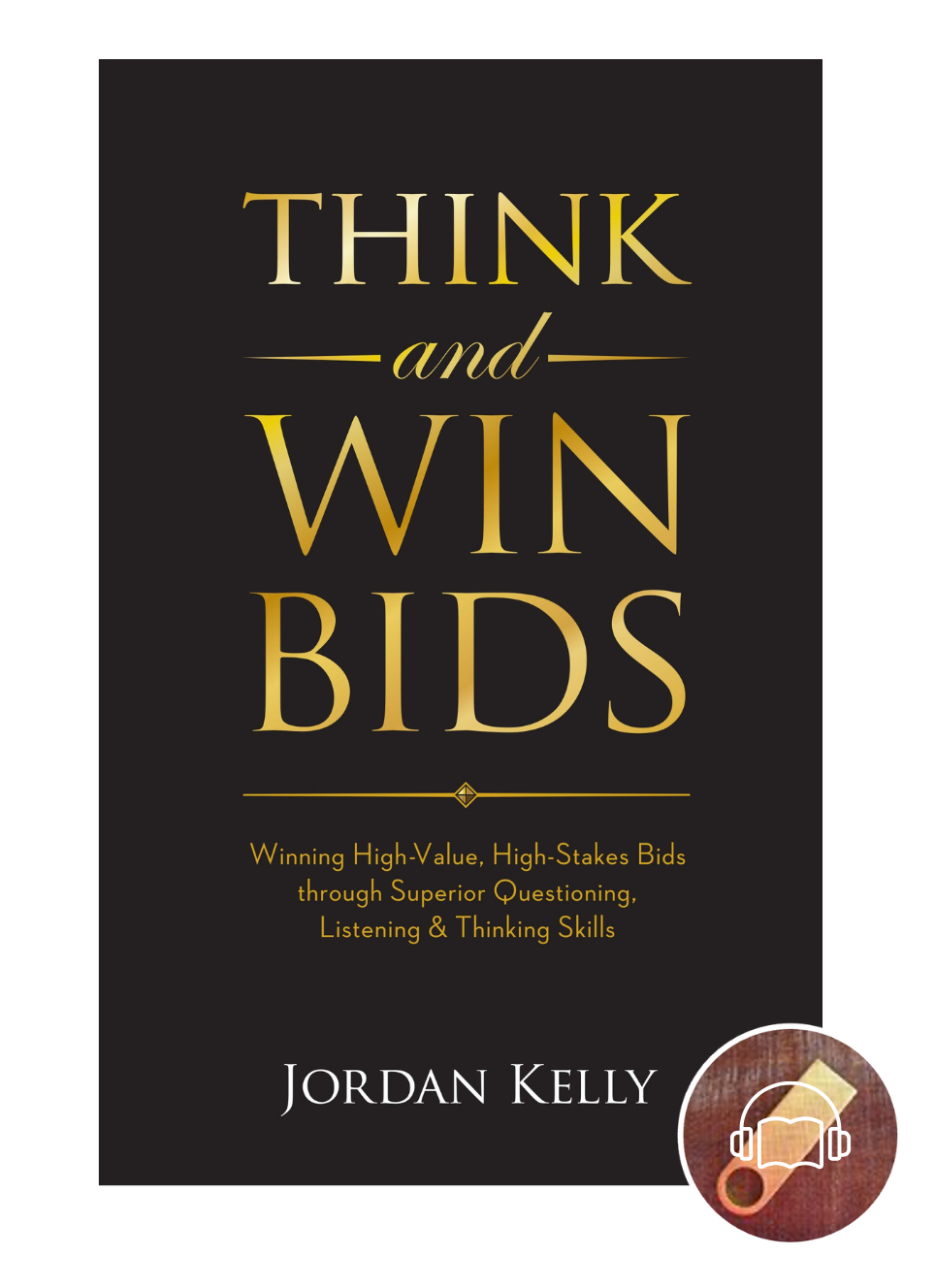
By Jordan Kelly
•
January 23, 2025
THINK AND WIN BIDS Winning High-Value, High-Stakes Bids through Superior Questioning, Listening & Thinking Skills The three fundamental skills of a successful bid strategist and bid leader are the ability to think , to listen and to ask quality questions . ' Think and Win Bids ' is more than a catchy title. This is a book with a strong message and a wealth of commanding insights into the fundamentals of winning bids . . . including the need to deeply understand a potential customer or client organisation, the world in which it operates, its intended procurement, and the all-important backdrop against which that procurement is being made. The capacity and willingness for a bid leader or business development professional to think deeply, logically, strategically and client-centrically is a key differentiator between those who can sustain a high win rate and provide much-needed leadership in new-business pursuits, and those who flounder in such a role. It’s a skill set that can be taught – so long as the necessary degree of humility and “coachability” exists. And that’s the reason this book was written. Its title is an unashamed play on that of the all-time business classic, Think & Grow Rich , penned in 1937 by leading business thinker of his time, Napoleon Hill. This highly readable, compact book will teach you: The importance of understanding your customer or client organisation and its procurement from a holistic (versus a narrow, service- or product-focused) perspective. How to gain a detailed and bid-winning appreciation of the procurement psyche of your prospective customer or client organisation. How to determine the most valuable information to acquire about a customer or client organisation’s intended procurement and the bigger picture directing or impacting it. How to plan for the acquisition of the above points of critical knowledge. The difference between high-value and low-value conversations and how to plan for the former. The specific differences between great listeners and average listeners. What highly effective business development operatives and bid professionals do that average ones don’t. The many types of information available to help inform your bid strategy, and how to source them. Little-known sources of competitor information. The criticality of channelling information back, in a valuable format, from the client or customer coalface to the bid team. What you need to know when your client organisation has its own (up-the-line) client. How to take advantage of arrogance on the part of the competition. The importance of avoiding arrogance in your own organisation. The value of “sleuthing” the customer’s documentation versus simply “reading” it. The critical distinction between “features” and “benefits” and how to capitalise on your ability to translate one into the other. What constitutes bid strategy . . . and what doesn’t. How to turn raw information into bid-winning intelligence. Working wide while drilling deep in the strategy formulation phase. How to develop a winning bid strategy. Why “thorough” is the best default position when it comes to strategy. Why talk of “silver bullets” is naive. How to avoid confusing tactics with strategy. Why templating is the opposite of thinking. The importance of documenting your bid blueprint in detail. How to position your organisation as a trusted advisor. How to get the most out of a de-brief. How to hire the most effective professional support.

By Jordan Kelly
•
January 15, 2025
Have you ever had the demoralising experience of being engaged in a phone conversation with someone who suddenly starts shuffling papers, filing or (worse still) reading and responding to an unrelated email? They often think you can't tell, which - worse still - is an insult to your intelligence. If you were sufficiently forward as to protest and the other party sufficiently ignorant as to persist with his or her other activity, he or she would no doubt have given you the “I can multi-task” line. But I’ll wager it was obvious to you that, at best, your “multi-tasking” conversation partner was hearing only sporadic soundbytes of your end of the conversation. It’s a neurological fact that the brain can focus on only one matter at a time. It might flit between subjects, issues and conversations . . . but it can concentrate properly on only thing in any given moment. In his best-seller, ‘The Organized Mind’ , neuroscientist Daniel J. Levitin produces evidence to underscore how minimising the attention devoted to any one thing (the natural consequence of trying to spread one’s concentration amongst several things) dramatically decreases the quality of attention both to that and to everything else on that individual’s plate. Conversely, conceptual and critical thinking, along with insight and ingenuity, Levitin stresses, happen only when we screen out distractions and properly focus. Already, it’s pretty obvious how the nonsense practice of “multi-tasking” negatively impacts not only the quality of critical submissions, but every process that feeds into their production . As a bid strategist and coach, here are just two of the key processes that I regularly witness being adversely affected: Participants in strategy workshops insisting on reading and responding to emails and text messages . . . switching off to the thread of fast-moving, group conversations and thus forgo-ing their understanding of, and input into, the evolving bid strategy. Section authors and other writers interrupting their flow of writing inspiration to answer emails and their own incoming phone calls. (If professional authors feel the need to shut themselves away in order to place their full and uninterrupted focus on the piece they’re working on, why would someone who doesn’t write for a living feel they can produce a quality written output while “multi-tasking”?) Aligning with my cynicism over the concept of “multi-tasking” proficiency, Stanford University researchers have found that “multi-taskers” (a) have difficulty organising their thoughts and filtering out irrelevant information, and ( b) are actually slower at them, with their switching from one task to another (versus those who stay focused on one activity until it is satisfactorily completed). Potentially, there’s also evidence that multi-tasking lowers one’s IQ. A University of London study found participants who multi-tasked during cognitive tasks experienced compromised IQ score declines similar to what might be expected had those individuals smoked marijuana or stayed up all night. Coming back to bidding. When you’re otherwise throwing everything at a must-win, high-stakes bid, why go at it with diffused mental energy? To do so argues with every claim you make – to yourself, to your bid team colleagues, and to the potential client – as to the importance of victory.
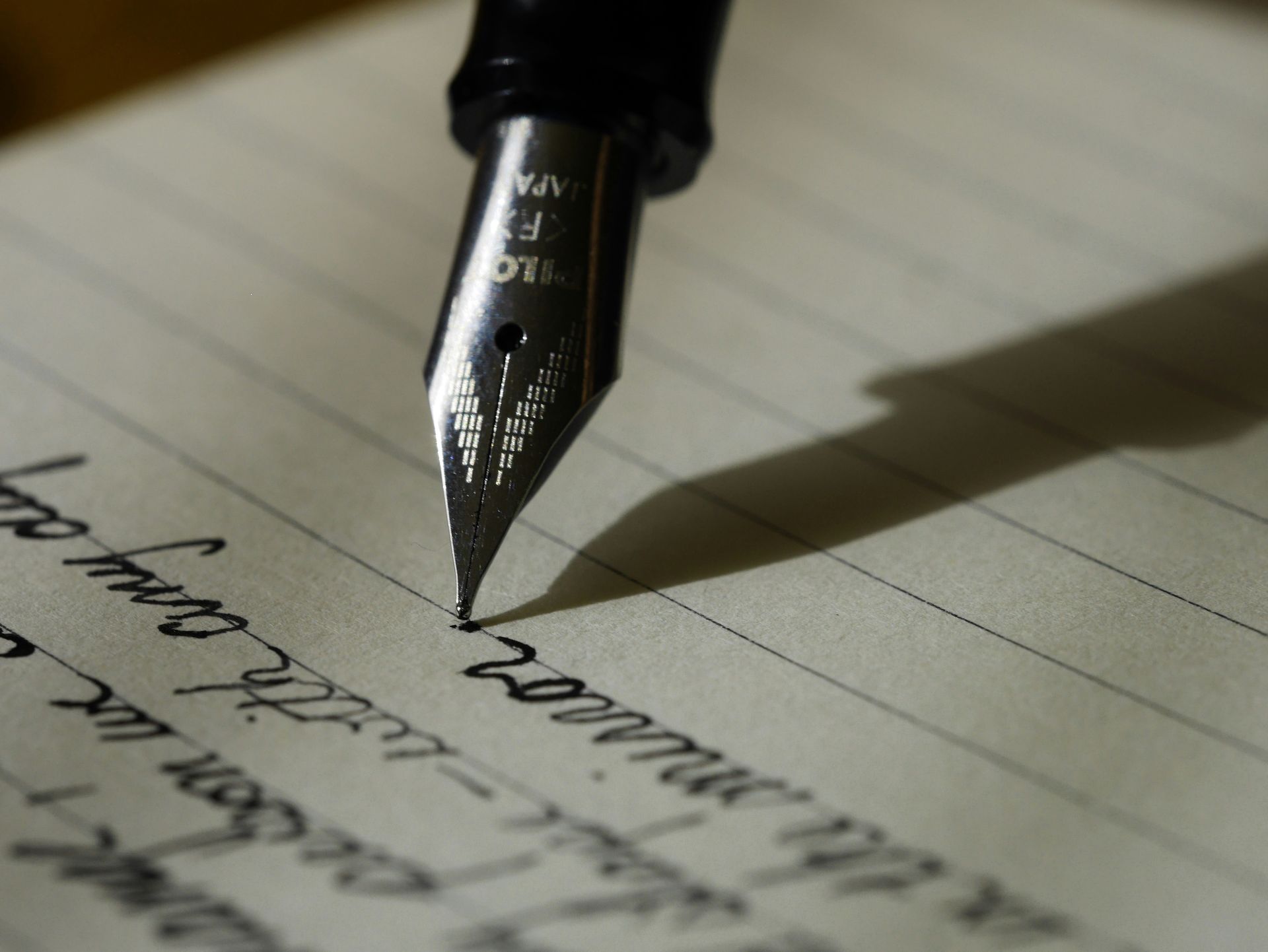
By Jordan Kelly
•
January 15, 2025
In ‘Five Tips to Sharpen Your Bid-Writing’, I wrote about the importance of having clear and documented bid strategy, focusing on benefits, answering the client’s questions, substantiating your claims, and avoiding consultant-style parroting. These considerations all, in one way or another, relate back to effectiveness in the strategy planning stage. That is, you can’t expect to execute these tips successfully unless Comprehensive research and thinking has taken place beforehand. My next lot of tips relate to the writing function per se. Tip No. 6 – Client Focus vs Supplier-centrism Be client-focused not only in your content (i.e. as above, this relies on a solid bid strategy), but also in your writing . If and whenever possible, your choice of opening words should let the evaluators know that your answer and information is going to be framed in the context of the client organisation's interest, its needs, its project / account / contract, its priorities, and its concerns. Then keep the focus squarely on the client - throughout the entire piece. Don’t revert to an organisationally self-centric tone. Tip No. 7 – Steer Clear of Hot Air & Hype Avoid the temptation to slip into sales-speak. Don’t be tempted to go into marketing copywriter mode. It’s not required. Worse, you’ll come across as an amateur, if copywriting isn’t your day job. For the most part, write as you would speak. It’s the most readable way to write. If your writing is natural, informal and unstilted, that is in fact what you are doing: You’re speaking to the client. You’re just doing it through the written word. So don’t out-clever yourself by falling into the mistaken mindset that you need to be a creative writer to write bids. In fact, trying to be creative or “salesy” is what brings a submission down. It’s about getting the basic content correct and complete, then simply making sure it progresses logically and reads sensibly. Tip No. 8 – Avoid the ‘Cut & Paste’ Trap Do NOT “cut-and-paste” from your company’s policies and procedures manual or corporate / product marketing materials. Give the evaluators more credit than to fall for this practice. Tip No. 9 – Be Wary of the Template Trap Similarly to the above, don’t rely on templates and text from previous submissions. Apart from the obvious scope for mistakes, when you cut-and-paste you’re not exactly working with a genuine client-centric focus. That is, the focus of the copy in question is not this particular client . . . at best, it’s any client. Tip No. 10 – External Impressions Read your finished piece out loud . . . to someone else . Read your material aloud to a disinterested party. You’ll avail yourself of the invaluable phenomenon of hearing your writing through that person’s ears. So much the better that they have no knowledge of the topic; you’ll quickly ascertain whether or not your piece makes sense to the common reader or other non-technical audience.
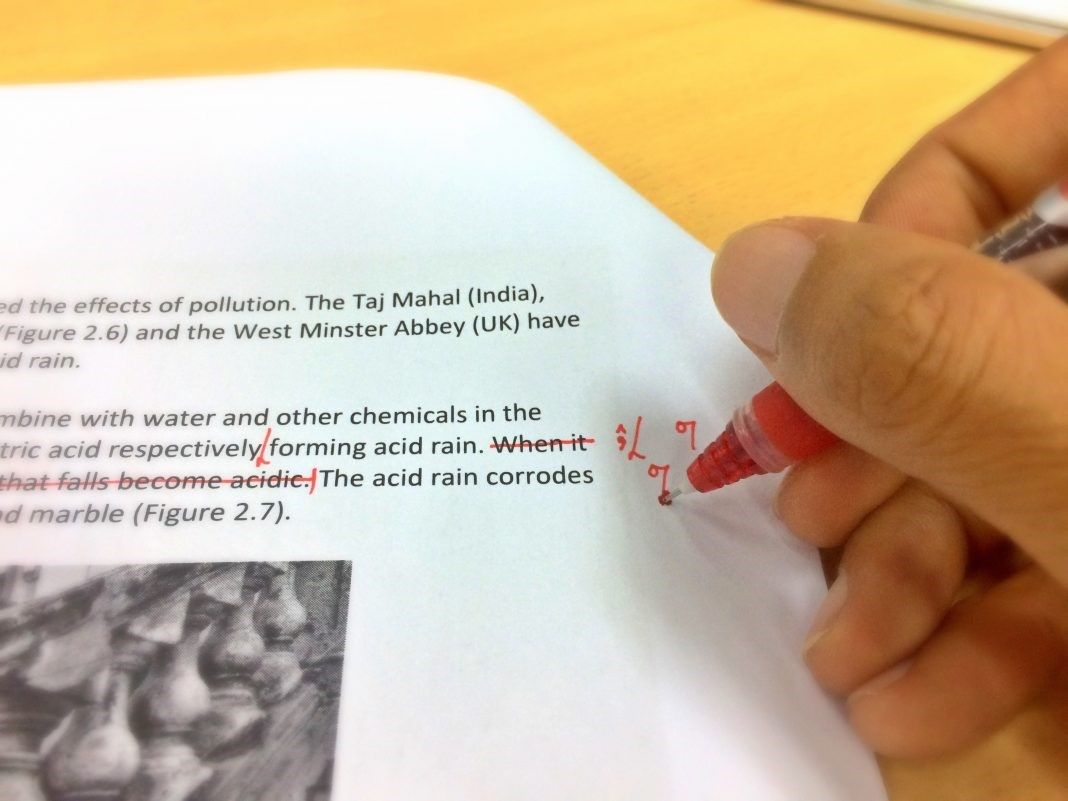
By Jordan Kelly
•
January 14, 2025
More “Jones Group is committed to incorporating ethnic participation as a core function in all of our contract-specific management processes, and to ensuring that all of our dealings with this specific ethnic group continue to consistently take place in a culturally sensitive manner. Jones Group recognises that an ongoing commitment, and firm leadership, from management is vital to ensure that the developed Ethnic Participation Plan is both successful and effective.” Less “Five percent of our apprentices have been sourced through the Government’s SKILLS program, which obtains most of its participants from this demographic.”
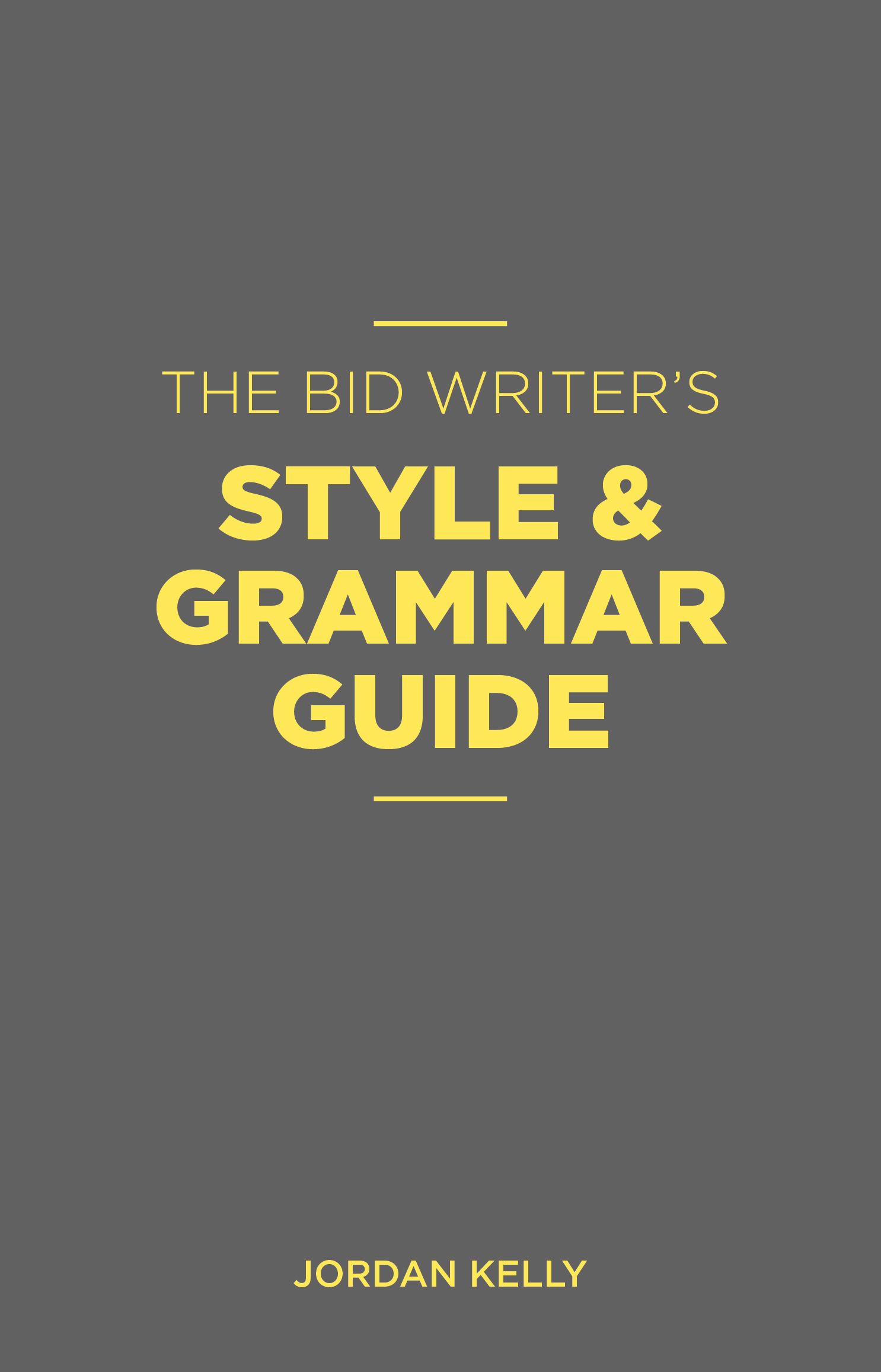
By Jordan Kelly
•
January 8, 2025
Your organisation’s credibility is either enhanced or eroded by the quality of your writing and the standards it reflects. ' The Bid Writer’s Style & Grammar Guide ' is far more than just a reference manual on all things grammar. It also provides tuition on many other basics of effective bid-writing, including on strategy, as the essential foundation of a high-quality proposal document. Exercised diligently, these core principles and practices will see you produce not only grammatically correct, but highly readable and compelling, submissions. Readers will benefit substantially from a wide range of topics – from writing with style and clarity, avoiding “fashion-speak”, and achieving believability through substance and substantiation, to ensuring your writing is client-focused rather than supplier-centric, benefit- as opposed to feature-oriented, and smooth and natural rather than stilted and indirect. Also featured are sections on common grammar traps, commonly mis-spelled words, commonly confused words and terms, and sexist versus non-sexist language and terminology.

By Jordan Kelly
•
January 6, 2025
I have a beef with younger writers: Their propensity to see question marks as unnecessary. Perhaps they feel that avoiding the use of a question mark (where one is, in fact, necessary) makes their writing read more authoritatively. Whatever their reasoning, such a practice is grammatically incorrect. A question is a question, and it should be denoted as such with a concluding question mark. Ironically, it seems just as many of these young writers employ question marks when it is grammatically incorrect to do so: “He asked what their labour turnover was?” This question is indirect and does not require a question mark. This is not, however, to be confused with the fact that a question mark is used to indicate a reflective question (although these instances occur primarily in spoken English: “You were showing a profit up until then?”) . Perhaps I’m just a grumpy grammar curmudgeon. But I firmly contend that bids, tenders, proposals and any other formal submissions are the place to show high standards and all-round diligence. There is no more glaring way to demonstrate the opposite than with sloppy grammar.

By Jordan Kelly
•
January 6, 2025
‘Metre’ is the rhythmic structure of a piece. Although generally applied to poetry and similar prose, the brain nonetheless follows the metre of various other styles of writing. The reason – in my view – that metre is a technique applicable in copy other than poetry, is that you should aim for consistency of “sound-flow” within paragraphs. This helps the brain experience “harmony”. But . . . when it comes to copy other than poetry, there’s a trick to it: While you want that nice rhythm to your words, you don’t want to lull your reader to sleep. After all, most RFP response sections are a fair bit longer than your average poem. The key is to strike a balance between rhythm and variety . One of the ways to achieve this is to vary the number of sentences in your paragraphs. The other is to vary the length of your paragraphs. You should do both. This is actually a well-established principle of journalistic feature writing: the writer might, for example, have two standard paragraphs, then one fairly long and fact-chunky paragraph and follow that up with a paragraph consisting simply of one short and punchy sentence. Check Your Metre with this Technique Here’s a simple technique you can use to check for, and avoid, monotony in the metre of your proposal-writing: Hold your copy in your hand and stretch your arm out to its full length. Examine the size of each paragraph by viewing them as a block of type. Don’t read them and don’t take note of the words. Just look at the amount of space each takes up and compare it to the amount of space occupied by the paragraphs around it. If you see five big, unbroken blocks of type in a row, you can be reasonably sure your writing is monotonous. On the other hand, if you see half a dozen paragraphs in a row that run little more than the length of a sentence, you might reasonably suspect your writing will sound very “staccato” to the brain – not a pleasant “metre” for long copy. One final tip: Many “non-day-job” writers tend towards copy that errs on the lengthy and monotonous side. An effective way to consolidate an important point explained across several lengthy (or even standard) paragraphs, is to consolidate the explanation with a short, sharp and shiny subsequent paragraph. This will help inject “punch” into your copy.
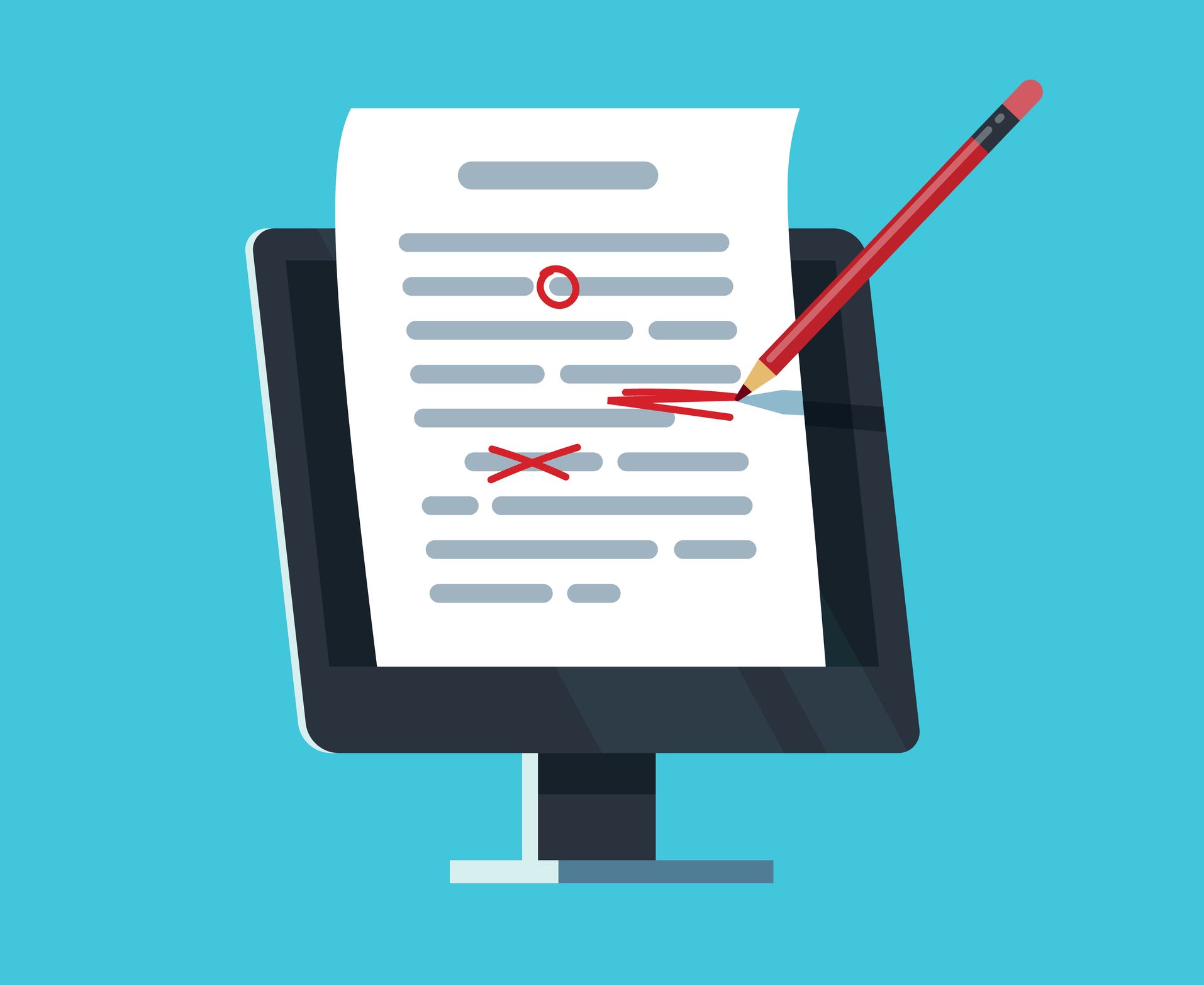
By Jordan Kelly
•
January 3, 2025
The checkpoints in Part One of this list focused primarily on ensuring substance and strategy in the written submission. The points in this – Part Two – checklist relate directly to the quality of writing and editing. Bid writers and contributing subject matter experts should ask themselves: Are my sentences and paragraphs of a reasonable (and preferably, a varied) length? Are my sentences complete? Have I ended paragraphs and started new ones according to a clear progression of logic in my material? Have I been clear and concise? Can I cut out any unnecessary words? Have I written to express, rather than to impress? Have I avoided flowery and/or fashionable language? Are all my facts relevant? Have I explained any facts and observations that, from the evaluator’s perspective, require it? Have I checked my copy for spelling and grammatical errors (particularly those I know I commonly make)? Have I avoided the over-use of industry jargon? Have I explained any jargon, where it won’t be familiar to the evaluator? Have I avoided the use of my company’s own internal-speak and other terminology that the evaluator may not fully understand, and therefore may have to guess at? Have I read my copy allowed to a disinterested party, to experience the valuable phenomenon of “hearing it through another’s ears”?

By Jordan Kelly
•
December 30, 2024
Here’s a random grab of quick thought-nuggets from my book, ’ 50 Essential Bid-Writing Tips ‘: A clear strategy paves the way for clear articulation. As in strategy, so in articulation. Never put pen to paper on an important, high-value submission without first producing a documented bid strategy as a blueprint. And make sure that strategy document is user-friendly. Think and write in terms of benefits, more so than features. Be cognisant of the distinction between benefits and features i.e. the benefit results from the feature. Join the dots for the client organisation and its evaluation team members; don’t leave them to extrapolate the benefit from the feature for themselves. Important: This involves thinking deeply about the client’s contract and associated needs. Answer the question. Don’t devolve into evasive writing because you don’t know how to answer a question, or because you have insufficient material to address it with substance. Have the integrity to correct the problem at its source, seeking out the information you need, or going back into the planning room if your content is lacking as a result of an incomplete or incoherent strategy. Don’t let a lack of substantiation erode your credibility. One of the most common flaws in Expression of Interest (EOI) and Request for Proposal (RFP) responses and, indeed, any other form of bid is the proliferation of “empty” claims – claims made with no attempt to provide specific points of proof or any other form of substantiation. Largely unintentionally – but very effectively, all the same – these convey an arrogant, salesy tone that screams: “Look, just trust what I’m saying, OK?” Frequently, bids peppered with these come across as just the reverse: Untrustworthy. Process, don’t parrot. You’ve heard the old adage, “A consultant is someone who asks for your watch, tells you the time and charges you for it.” A similar concept underlies the common tendency to either repeat verbatim, or to minimally re-phrase, large tracts of the client’s own EOI or RFP documentation. That demonstrates neither any conduct of your own research, nor employment of your own thought processes. Be client-focused in both your content and in your writing. Be client-focused from the beginning. If and whenever possible, use your choice of opening words to let the client know that your answer and information is going to be framed in the context of his interest, his needs, his contract, his priorities, and his concerns. Avoid the temptation to slip into sales-speak. Don’t be tempted to go into marketing copywriter mode. It’s not required. Worse, you’ll come across as an amateur, if copywriting isn’t your day job.

By Jordan Kelly
•
December 26, 2024
The greats of literary history have much to teach the writers of today. No-one, however, could benefit more from becoming a student of these masters of the written word than the commercial bid writer. This fun - yet highly insightful - little read is an assembly of the enduring and pithily expressed wisdom of over 100 authors, strategists, philosophers and other accomplished figures. It features 47 smart little lessons from yours truly, on Research, Thinking & Strategy , on Writing , and on Editing, Re-Writing, Practice & Perfection – reinforcing the timeless advice of these sages. ‘ Bid-Writing Lessons from the World’s Greatest Authors ’ contains gems like: What an ancient Chinese military general (and author) can teach you about strategy, and how to use those learnings to outsmart and outmanoeuvre your competition. The criticality of understanding the difference between strategy and tactics (a distinction your competitors probably don’t understand, and one you can capitalise on). What the Bible says about the need for ensuring you have a wide range of sources contributing to your bid strategy. Two world champion boxers offer the self-same admonition: Understand the importance of a consistent, yet fluid , strategy. Hemingway said most people never listen; Shakespeare also stresses the wisdom of listening over speaking. Peter Drucker says the most important thing in communication is to hear what isn’t being said (it’s also the way to develop the most client-centric strategy possible). Henry Ford and Richard Nixon agree: Very few people truly think . Einstein admonishes: Never stop thinking. Twain and Pascal comment on avoiding self-centricity (which is rampant in a lmost every bid, tender and proposal ). What Shakespeare and Emerson say about a bidder or tenderer not being blinded its own light. What Shakespeare, Thoreau and F. Scott Fitzgerald have to say on the topic of knowing your reader . . . and the foolhardiness of writing about something you don’t understand. Substance and substantiation: Why the greats say writing comes more easily if you have something to say. Kipling’s famous, timeless quote on how to ensure you identify and include all the relevant facts in everything you write. Famous French poet and essayist Charles Peguy says one writer tears his words from his guts, while another pulls them lightly from his overcoat pocket. Which is best, and which type of writer are you? Chandler equates a certain speed with quality of output. Fast or slow, and why? W. Somerset Maugham speaks of style . . . and why you shouldn’t try to adopt one. Stephen King on the use of long words instead of short ones . . . as relevant to bid writers as to great novelists. Hear it direct from the master of suspense. 1000 words buys you the Lord’s Prayer, the 23rd Psalm, the Hippocratic Oath, a sonnet by Shakespeare, Lincoln’s Gettysburg Address and several more pieces of iconic literature. Why do so many submission section contributors ramble? More opinion in the short copy versus long copy debate. A classic quote from Mark Twain that highlights the need for planning word count-restricted response sections even more carefully than non-limited sections. Samuel Johnson makes a point about the transparency of writers who plagiarise and imitate. Shakespeare on writing with purpose – one of the primary keys to a strong and compelling submission. Whoever said, “Being a good writer is 3% talent; 97% not being distracted by the internet” chose to remain anonymous. That’s a shame, because they have a great message for bid teams. What Hemingway, Michener, A. Bronson Alcott and Mark Twain all have to say about first drafts. The magic of editing: All the greats agree on this one above all else.

By Jordan Kelly
•
December 25, 2024
Many bid and other categories of business writer make the mistake of linking an action with a company e.g. Bardwell Controls will install the new security system. This is both grammatically incorrect and, in the context of a bid, unproductively impersonal. Who a t Bardwell Controls will install the new security system? Remembering the fact that people ( not companies) perform actions, and that people prefer to deal with other people rather than faceless corporations, is always a good move when you’re writing proposals.

By Jordan Kelly
•
December 24, 2024
In the almost two decades I’ve been conducting pursuit leadership, bid strategy and bid writing consulting work, there are some basic issues that continue to show up across all industries’ submissions. The following are some of the most common observations / recommendations I make when furnished with a cross-section of a new client’s (historic) submissions to provide commentary on: A bid is not a brochure. Ironically, (what I call) “brochureware” copy is just as likely to flow from the keyboards of technical and other subject matter experts, as it is from marketing personnel. Marketing and sales support personnel are prone to producing this type of “empty, generic and salesy” copy when they don’t have a solid, detailed and user-friendly bid strategy blueprint to inform and guide their content. However, technical staff and subject specialists (engineers, for example) just as readily fall into the same trap – albeit they do it for a completely different reason: they’re under the impression that they are expected to produce marketing-style copy. (They’d do better to simply articulate their content in their normal fashion, even if this were more of a dry and academic style. At least there would be more chance of some real substance appearing in their written contributions. Each new bid is a process in its own right. A bidder must view the preparation and production of each bid as having nothing to do with the last. Each bid must be based upon its own unique strategy which, in turn, is formulated from dedicated research into the background of the project or contract being bid for and the prospective client. That makes templating and importing concepts and content from previous bids a nonsense. Start earlier to (a) go beyond face value, and (b) get a jump on the competition. Becoming adept at satisfying the many unwritten and unspoken needs (including information/reassurance needs) of a prospective client necessitates the identification of those needs in the first place. This listening between the lines, and deeper level of research, is rarely achieved when the bid strategy process isn’t commenced until the client’s Expression of Interest (EOI) or Request for Proposal (RFP) document is released. An Executive Summary is neither a covering letter nor a sales front-piece. The Executive Summary is exactly that: a summary . . . a summary of the key themes of the overall submission, and a summary of the proposition itself. With rare exception (or any), has any Executive Summary I’ve ever seen been both directly connected with and into the core content, and yet also functioned adequately as a stand-alone summary. More often than not, they are a “We are pleased to submit our proposal for ETC / It is our pleasure to respond to ETC” unnecessary second covering letter, or an inappropriately self-promotional piece. ( Fully ) Customise Staff Profiles Properly and diligently customise staff profiles and Curricula Vitae. This is rarely done – or rarely done thoroughly. Further, beware of superlatives and highly subjective language. All claims should be specific and measurable, and consistent with claims in the main body of your EOI or RFP response. (One submission I received wrote of two project delivery team members’ “50 years’ combined experience”. When I reviewed their CVs and did the math, it turned out the true figure was little more than half of that.) Write – or at least edit – case studies to reflect their specific relevance to the procurement in question. Leaving the evaluators to determine all points of relevance between your submitted case studies, and the product or service being sought by the prospective client, is a lazy approach – and it comes across that way, too. Case studies can be a powerful supplement to a submission, and if you’re allowed their inclusion, you should maximise their impact by drawing every point of relevance with the client’s / customer’s project or procurement, and associated needs / concerns / priorities. Don’t undermine your submission with poor grammar, poor editing and typographical errors. It would seem logical that, if a bidder is submitting a response for a project or a contract worth in the tens or hundreds of millions, the least investment they’d make would be the services of a good editor. Yet, either they haven’t availed themselves of an editor, or that editor wasn’t particularly “good”.

By Jordan Kelly
•
December 19, 2024
"A phrase or expression in which the same thing is said twice in different words." That’s the dictionary definition of “tautology”. Tautologies are reflective of clumsy and unskilled writing . . . and you should hotly avoid their appearance in your submissions. Three of the most common tautologies I see in Expression of Interest (EOI) and Request for Proposal (RFP) responses are: 1. Past Track Record / Past Experience “Track record” is one of those trendy terms that, in a formal document, is best avoided. However, if you insist on using it (or if it’s a section heading in the procuring organisation’s own market call documentation), then – at the very least – make sure you don’t fall into the trap of referring to your “past track record”. “Past” is exactly what a “track record” is. Have you ever heard of a future track record or been asked to outline yours? The same principle applies in the case of “past experience”. Combining these two words produces a nonsensical term. All experiences are past. 2. Joint Collaboration A collaboration is, by its very nature, a joint effort. “Joint”, therefore, is redundant. 3. New Innovation An innovation is new. Have you ever heard of an old or existing innovation? Here are a few more tautologies often seen in business writing: Unite together Future plans Complete monopoly Mutual co-operation Present incumbent Still continues True facts Ultimate outcome Basic principles Personal opinion Past history
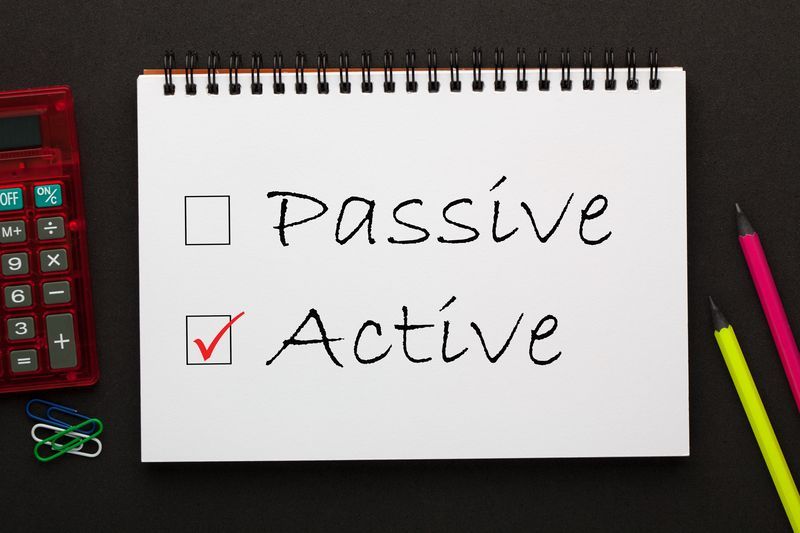
By Jordan Kelly
•
December 18, 2024
An effective way to avoid stilted, indirect or overly formal writing is to learn to write in the active voice, rather than the passive voice. Very simplistically, this is the difference between: Humpty Dumpty sat on the wall (active) , and The wall was sat on by Humpty Dumpty (passive) . It’s the passive voice that conveys the formality. Further examples: Active “Identifying one instance of the species would allow the environmental team to confirm it does, in fact, exist within the project footprint.” Passive “The identification of the species by environmental management personnel would allow confirmation of its existence within the area allocated for the construction of the buildings and infrastructure.” Active “It may be advisable for us to employ a dedicated stakeholder manager to ensure we liaise effectively with the community.” Passive “The employment of a dedicated stakeholder manager may be advisable, in order to ensure effective liaison between the consortium and community groups.” The passive voice is indirect, where the active voice is direct. The passive voice suggests and implies, it doesn’t command. It’s not authoritative and compelling, as is the active voice.
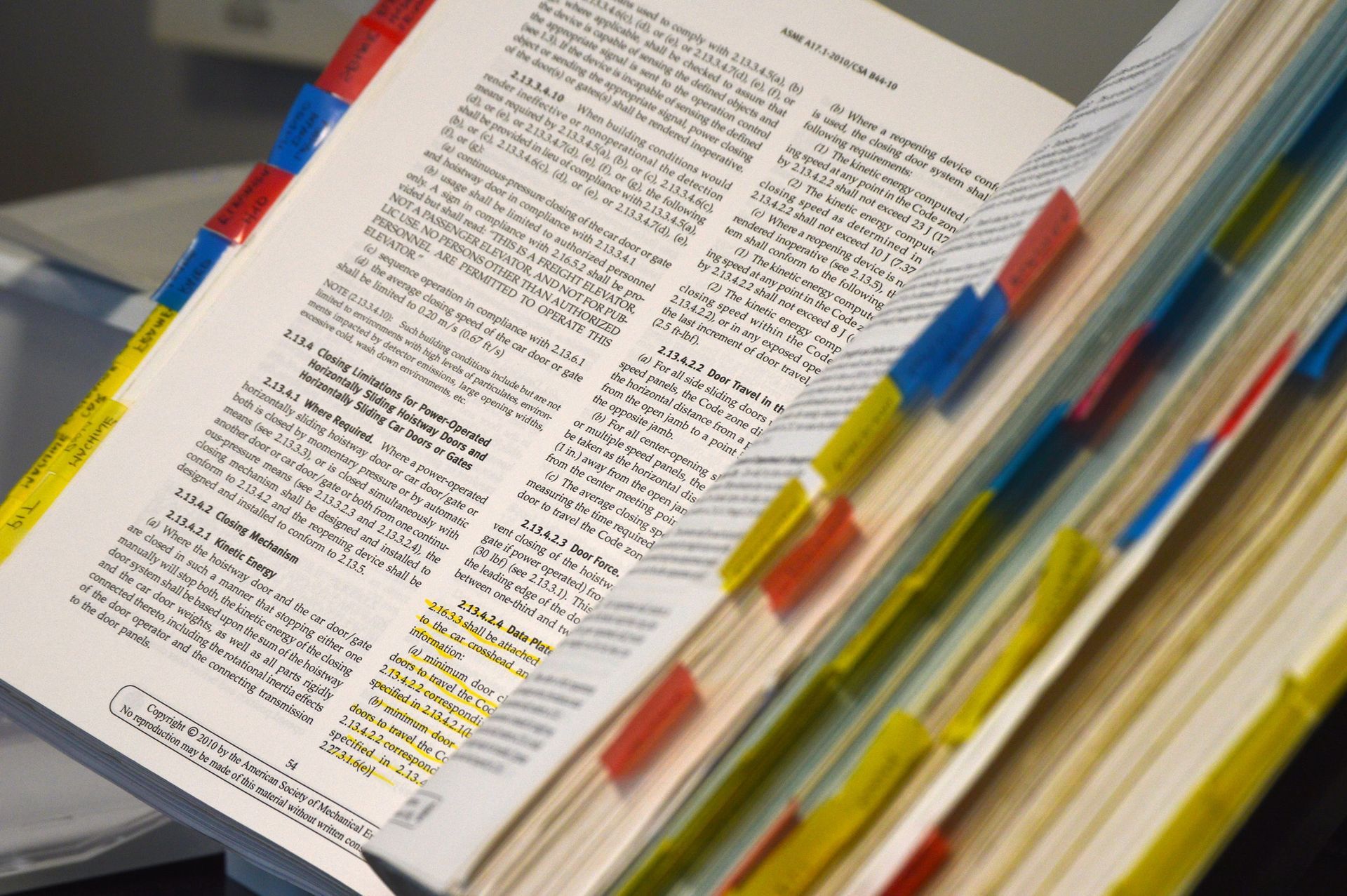
By Jordan Kelly
•
December 18, 2024
Among the most common word groups that fool bid writers (or any writers) is the "ible", "able" and "uble" group. Here’s a list of them to watch out for. It’s a good idea to memorise those you find yourself using regularly in your Expression of Interest (EOI) and Request for Proposal (RFP) responses and sales proposals:

By Jordan Kelly
•
December 18, 2024
When you insist on using your own in-house jargon with a customer and in proposal documentation, you demonstrate clearly to the customer your inward, internal, self-focused thinking. You give him or her the clear message that you are either unable or unwilling to think or communicate from any perspective other than your own/your company’s. And you indicate to them that they’ll have to constantly make the effort to interpret you and your position, rather than vice versa, as it should in fact be. Examples abound when dealing with B2C (business to consumer) organisations, especially the very large institutions. An example springs readily to mind: When my car experienced a flat battery, I called my home state’s automobile association for urgent road service. The young call centre operator made reference to something like “standard service” and something like “ultra”. I indicated that I needed her to explain the key differences between those two options. She seemed extremely surprised at my request and went on to do little more than repeat the same internal jargon – somehow expecting that to make things clearer at my end. After three attempts at getting her to understand that she was using “company speak” that wasn’t meaningful to me, she responded – still unhelpfully – by stating that I would have read about the different options when I took out my membership. So, here I am, stuck and stressed with a flat battery at rush hour, and somehow I am meant to recall the specific features of two levels of service I made a decision between several years ago. The point is, when someone displays an inability to speak in anything other than his or her employer’s internal jargon (and expects the listener to know exactly what he or she means by any given term) it flags a certain lack of communication maturity – and, arguably, a certain lack of intelligence. The same impression is conveyed to evaluators when an organisation’s bid writers demonstrate this same flaw. Further, it plants concerns as to the degree of frustration that might be experienced in communicating with the bidder’s delivery team or other client/customer-facing personnel, along with the associated scope for error – particularly if the service or product in question is of a highly technical nature, and non-technical staff will be involved in communications with the vendor or service provider.

By Jordan Kelly
•
December 16, 2024
Journalism offers many principles and practices that a bid writer may valuably heed . . . most especially as concerns the crafting of a punchy and enticing opening paragraph or, in journalistic lexicon, a “lead-in” or “intro”. This peak paragraph should encapsulate the essence of your piece. While you should be as direct and interesting as possible throughout, the “intro” sets the scene for all the content that follows in that piece or section. The ‘Inverted Pyramid’ Principle With the intro in place and doing its job, the next element of the journalistic formula a bid writer may wish to make good use of is the “inverted pyramid” principle. The inverted pyramid dictates that you organise the key points of your content in descending order of importance – leading in with a summary of the most important point, followed by the next most important point, then the next. This generally relates to the first three paragraphs, after which the rest of the story unfolds as an expansion of the points made in these. The journalistic rationale is that the average newspaper reader scan-reads most articles. Therefore, he or she needs to get the gist of the story in the headline and the first three paragraphs. While the reader-evaluator will, you would hope, read the full text of your response / proposal sections, it still behooves you to lead in with your most critical information and develop your piece in an order that maintains his or her keen interest. The AIDA Formula An equally viable format for rolling out your content is the “AIDA” formula used to guide direct marketing pieces. It’s similar to – although not the same as – the journalistic “inverted pyramid” principle. This acronym stands for Attention, Interest, Desire and Action . In “bid” terms, this formula translates to: • Get attention. • Build interest. • Unfold the big picture / your observations of the prospect organisation’s project or procurement, its needs, and the quantifiable benefits it seeks. • Build your case / establish credibility / provide proof points. • End with a reminder of your key theme and the wisdom of choosing your offering as the answer to the prospect’s problem or need.
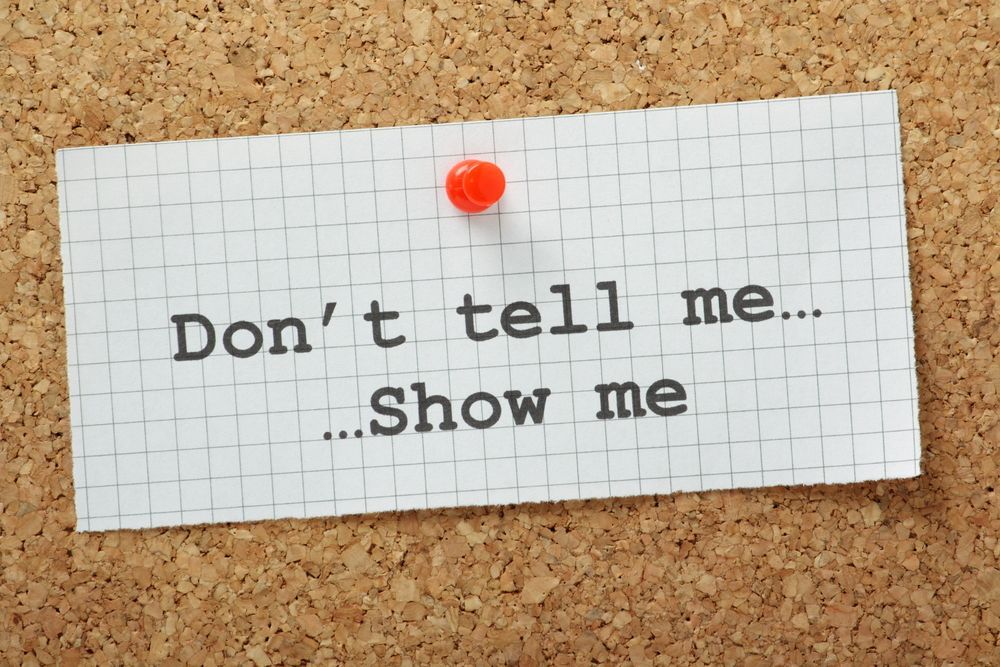
By Jordan Kelly
•
December 11, 2024
One of the most fundamental mistakes bidders make when answering a call for Expressions of Interest or Requests for Proposal, is submitting a response that’s full of unsubstantiated claims. Too often, a statement is made in an EOI or RFP response that offers no substantiation, no demonstration of its accuracy. It appears the evaluation committee is simply expected to accept the claim at face value. Yet the evaluators would not be doing their job if they do . . . and you, as bidder, haven’t done your job if you expect them to. Further, how can an evaluator award you selection criteria-related points when you answer a question with an empty, unproven claim? Respondents and their writers should ask these questions as they plan and write their answers: What is the proof that this is true / fact? Offer adequate and genuine substantiation – whether of a “third party” nature or by providing some form of provable quantification. Table a statistic, for example, and state the source (which should be a reputable body recognised either by your industry, their industry, or the business sector at large). What is the credibility of this information? Many bidders include lightly edited, thinly-disguised versions of the same material they include in their marketing material or on their websites. The credibility of this information is generally nil, since it is based on opinion-based claims the bidder is making about its own service or product. To be authoritative, you must be able to show that any opinion is, in some form, supported by a credible third party e.g. by accreditation. Why is it relevant / critical to the client / customer organisation? Don’t just state facts or table data and leave it to the evaluation committee to determine their relevance. Explain why, in the context of this bid, you consider that fact or datum important. In that way, you strengthen the support those inclusions loan to your proposition. If, on the other hand, you neglect to do this, you will have potentially wasted that opportunity. Worse still, the evaluator may misinterpret the connection you intended him or her to make. With regard to the answer generated by the above question, what is the proof point of this high-relevance criticality? A savvy bidder will offer a double layer of substantiation. First, it will offer proof of a claim, and/or demonstrate that the claim is proven or provable. Then, after drawing the relevance of that information to the client organisation’s specific needs or challenges, the bidder will go on to demonstrate and/or quantify the benefits that will result from the evaluator making a decision in the bidder’s favour, based on this information. In summary, table proof that your claim is true (not just your opinion); provide some authoritative indicator of third-party concurrence ; make it relevant to the client and, in turn, prove this relevance . Finally, if possible, quantify the benefits to be gained by taking the action the claim suggests should be taken.
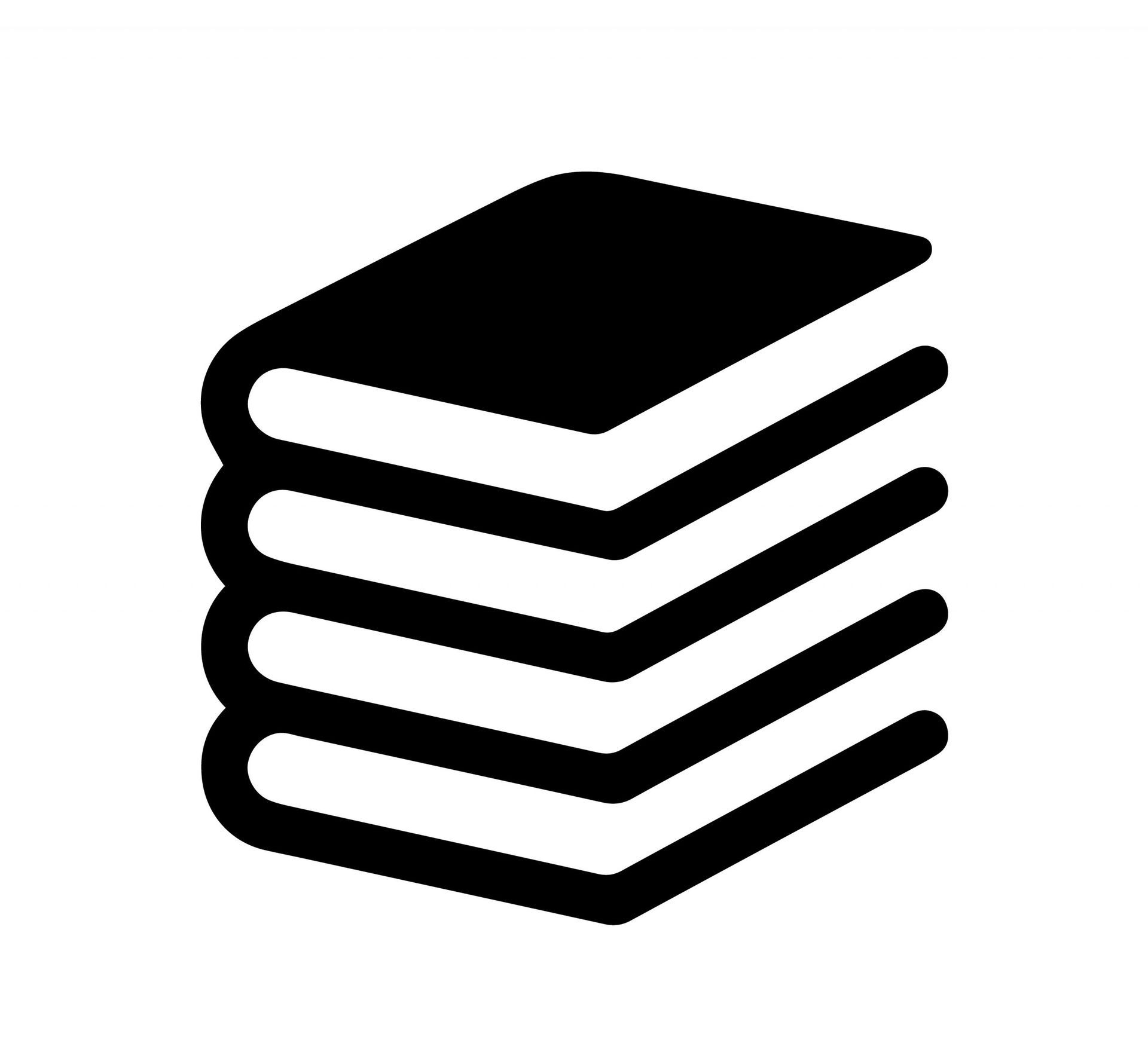
By Jordan Kelly
•
December 10, 2024
Whether you’re a well-seasoned author or a newbie bid writer, at either end of the spectrum, you can improving your writing output by: Exercising Discipline & Avoiding Distractions Professional writers don’t waste time waiting for “inspiration” to take them over. They exercise discipline: They close down their email programs and internet browsers, and (when they’ve done their research and planning), they simply get on with the job. Reading Voraciously One way to shortcut the “1000-hour rule” often associated with achieving mastery in any given field is, in the case of writing, to make a regular study of the works of highly competent and readable writers.

By Jordan Kelly
•
December 3, 2024
Two of the best ways to fast-track your writing skills are to: Exercise Discipline & Avoid Distractions Professional writers don’t waste time waiting for “inspiration” to take them over. They exercise discipline over their time. And they FOCUS . They close down their email programs and internet browsers, and (when they’ve done their research and planning) they simply get on with the job. Read Voraciously One way to shortcut the “1000-hour rule” often associated with achieving mastery in any given field is, in the case of writing, to make a regular study of the works of highly competent and readable writers. Reading well-written works of literature, and/or the outputs of writers whose style appeals to you, is a way of learning “by osmosis”. And, depending upon the amount of time and attention you devote, it’s also a very effective way of putting the further development of your skills on the fast track .

By Jordan Kelly
•
December 3, 2024
Here are some examples of particularly regrettable grammatical gaffes found in bid documentation: ‘Then’ Instead of ‘Than’ Unbelievably, some writers don’t know when to correctly use the word “than”, as opposed to “then” . . . as in: “Should this occur, than (i.e. should be “then”) we will implement the following contingency plan. Our experience demonstrates this course of action is more effective then (i.e. should be “than”) conventional responses.” ‘Your’ and ‘You’re’ Some writers don’t know the difference between “your” and “you’re” . . . (notwithstanding the fact that the contraction “you’re” has no place in bid writing) as in: “We have given careful consideration to the issues your (i.e. should be “you’re”) currently experiencing as regards consumables recycling. You’re (i.e. should be “your”) systems will be monitored on a weekly basis.” Full Stops and Commas And then there are writers who seem to think commas have replaced the traditional use of the full stop (and, worse still, that it serves no other function) . . . as in: “This is a current area of focus for our organisation, we are deeply concerned about the impact upon local waterways.” And there are writers who have never heard of the hyphen . . . as in: "A 25 year old piece of equipment" (which should be) "a 25-year-old piece of equipment", and "a to be advised date" (which should be) "a to-be-advised date". Or, worse still, writers who use clumsy and un-hyphenated conglomerations like "proAustralian" (which should be) "pro-Australian" and "semidetachable" (which should be) "semi-detachable". It looks horrid. It reads horrid. And it makes a horrid impression with Expression of Interest and Request for Proposal evaluators who value correct English and grammar.

By Jordan Kelly
•
December 2, 2024
If you’re a bid writer or subject matter expert contributing to a submission, always edit your work before handing it over to the bid manager, regardless of whether or not it will be the subject of further treatment by another writer or an editor. The following is Part One of a checklist you’ll want to apply to your work before handing it up the line: Is my introductory paragraph compelling? Have I proceeded to the main point/s as quickly as possible? Have I established credibility on behalf of my company, where this is necessary? Have I answered the question – directly, and in the required amount of detail? Have I provided data and any other form of proof point necessary, with regard to any claim I have made? Have I been clear in terms of the key messages I intended to communicate? Have I rolled these out and/or developed my case in a logical order? Have I framed the material from the client’s point of interest – in all regards? Have I adhered closely to the themes, content and instructions of the guiding bid strategy document? Have I employed these in a manner that helps to differentiate my company and our offering from the competition’s likely proposition? Have I focused on communicating benefits; not just features? Go to Part Two here .

By Jordan Kelly
•
December 2, 2024
Bidders cause themselves a huge problem when they insist on using trendy fashion-speak and other frivolous fuzz in their written responses. There are two key reasons they do this; neither of them good. More often than not, the use of this gobbledygook is an attempt to sound sophisticated and “switched on” . . . “up to the minute”. Other times it’s to smoke over a lack of substance in answers to the bid documentation’s questions. Often, it’s both. Bid teams and their writers can also get tangled up in this type of non-English even when there actually is knowledge and potential substance to be conveyed. Here are some (fabricated) examples of this “empty” writing. Example 1 We employ best-of-breed technology options to implement cutting-edge, proven solutions, ensuring you of a constantly innovative approach and continuous improvement in your IT environment. Example 2 Our track record demonstrates our commitment to world best practice and, accordingly, we will engage our focus on innovation throughout the contract. Example 3 As your business partner, we will work closely with you to leverage our experience across the project, producing an optimal solution that is robust, scalable and that can be seamlessly integrated with your existing systems. This convoluted, non-information is what results when little or no prior planning takes place and where, as a result, there is no central bid strategy . Worse still, this strategy-less starting point guarantees a very supplier-centric bid or proposal. And usually one that is not even particularly readable or sensible, let alone compelling. My recommendations are two-fold: Use plain English . Resist the temptation to dazzle the prospective customer or client organisation and its evaluators with an extensive array of corporate or industry jargon. Place priority emphasis (as early as possible) on conducting intensive, thorough bid strategy planning sessions (preceded by comprehensive client, contract/project and competitor research). This will help ensure a distinctive win theme and, in turn, solid content.

By Jordan Kelly
•
November 21, 2024
In recent years, I’ve noticed a decreasing standard of professionalism in the world of work-from-homers. This increased massively in the ‘COVID’ era. Not so long ago, it was primarily freelance writers, website developers and graphic designers from whom you could expect no landline numbers, rampant toddlers in the same room, barking dogs or televisions in […]


